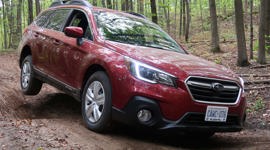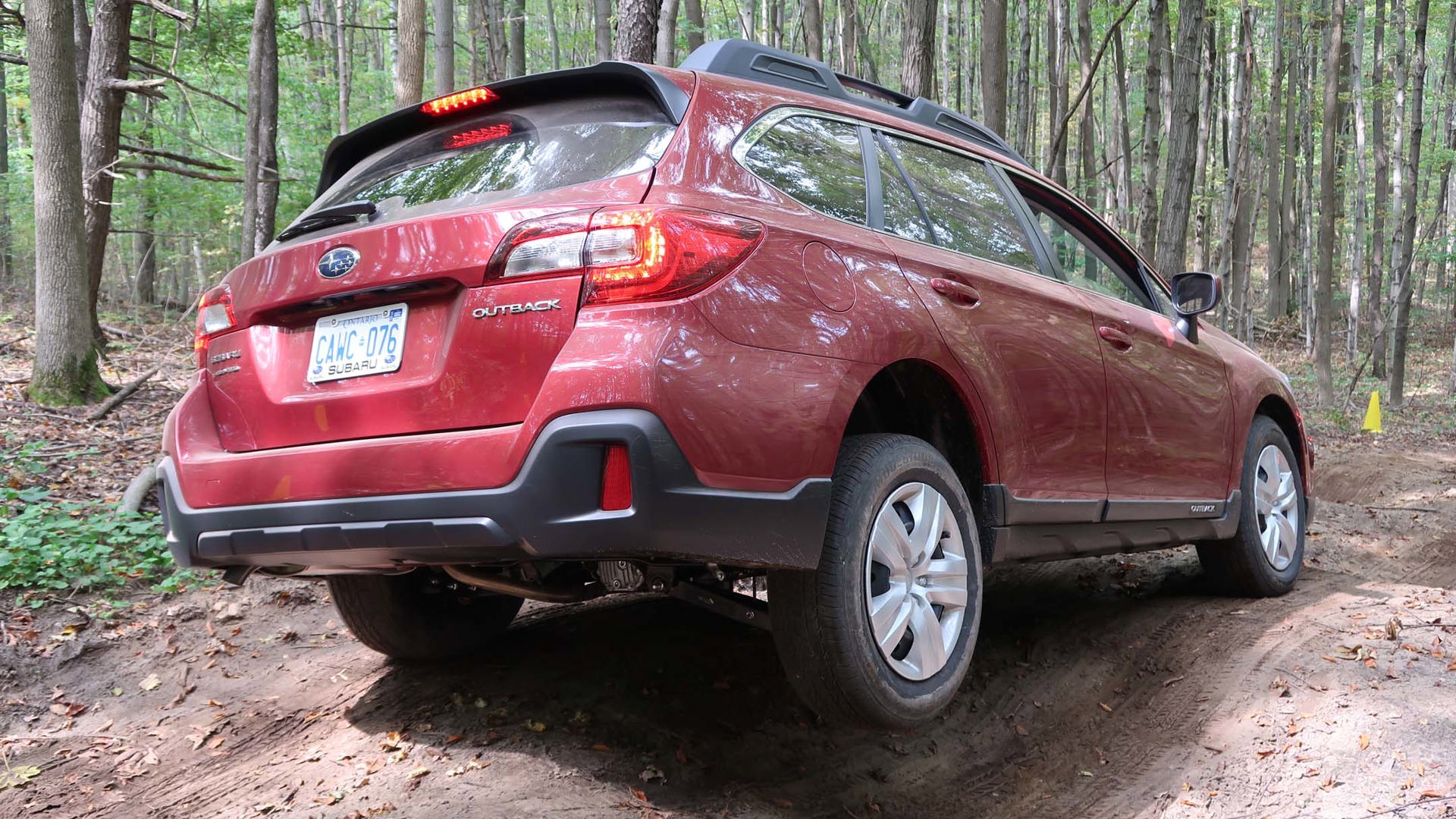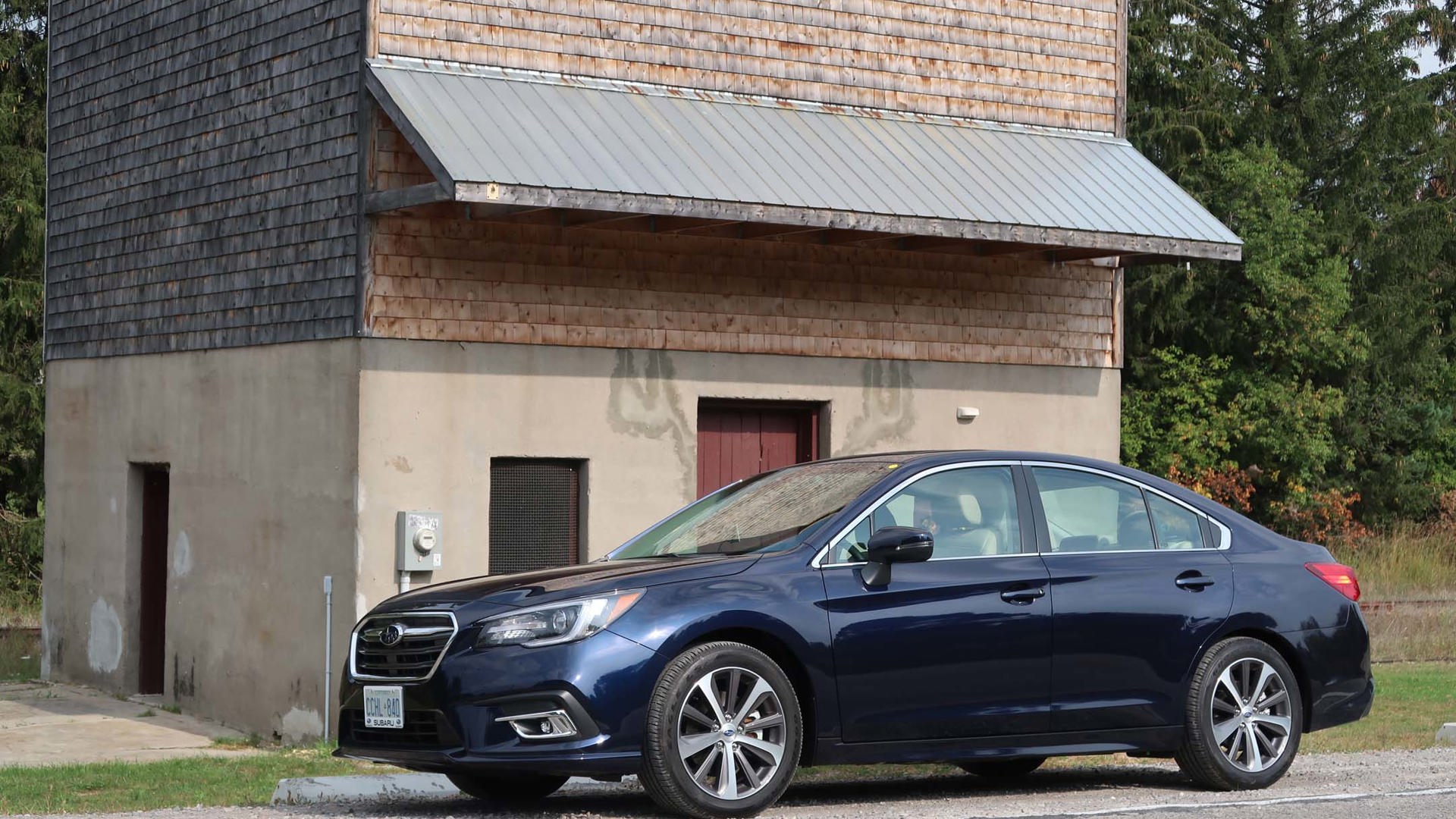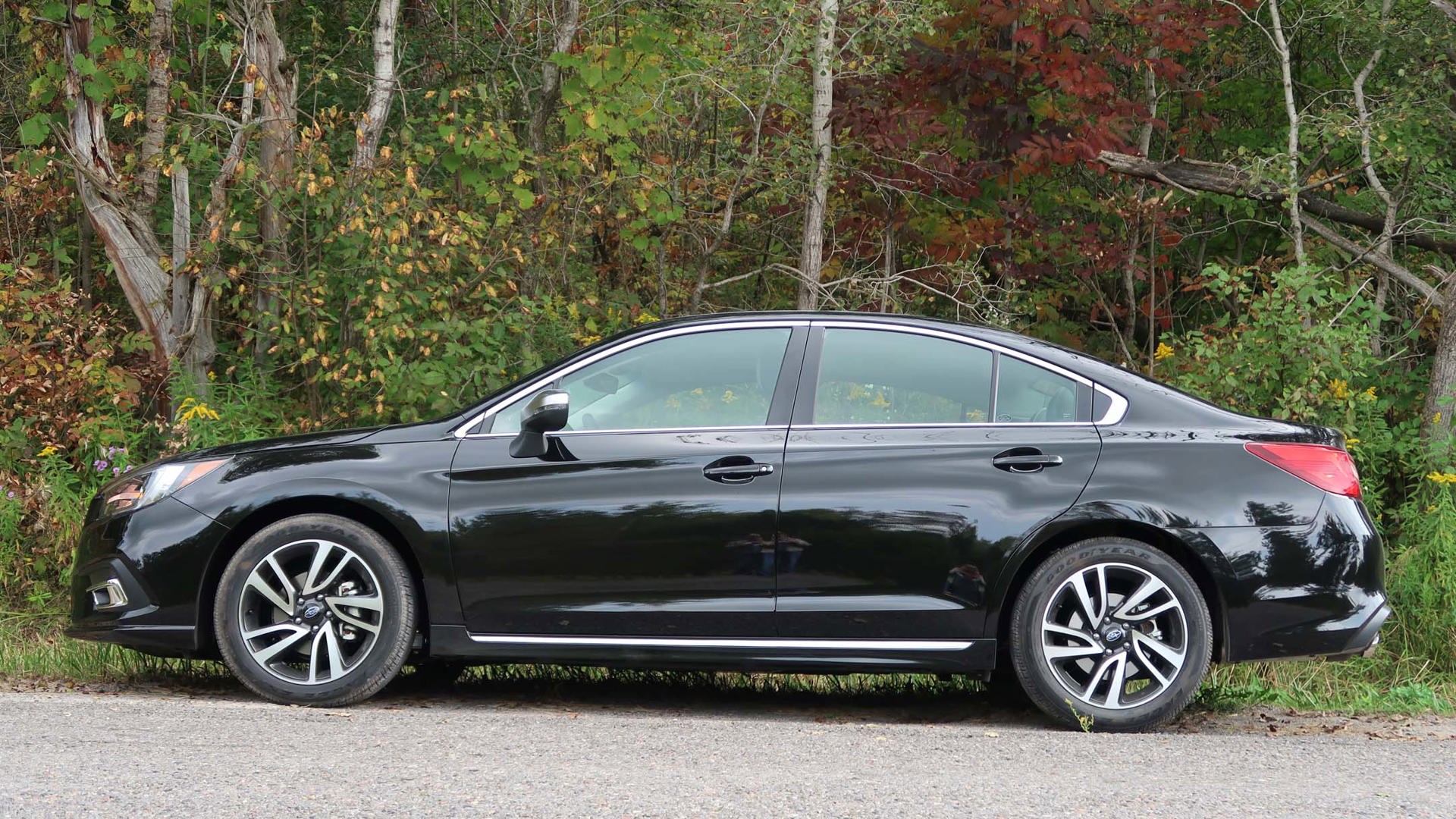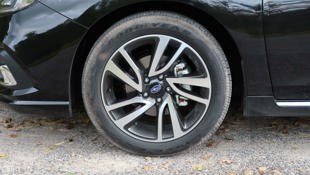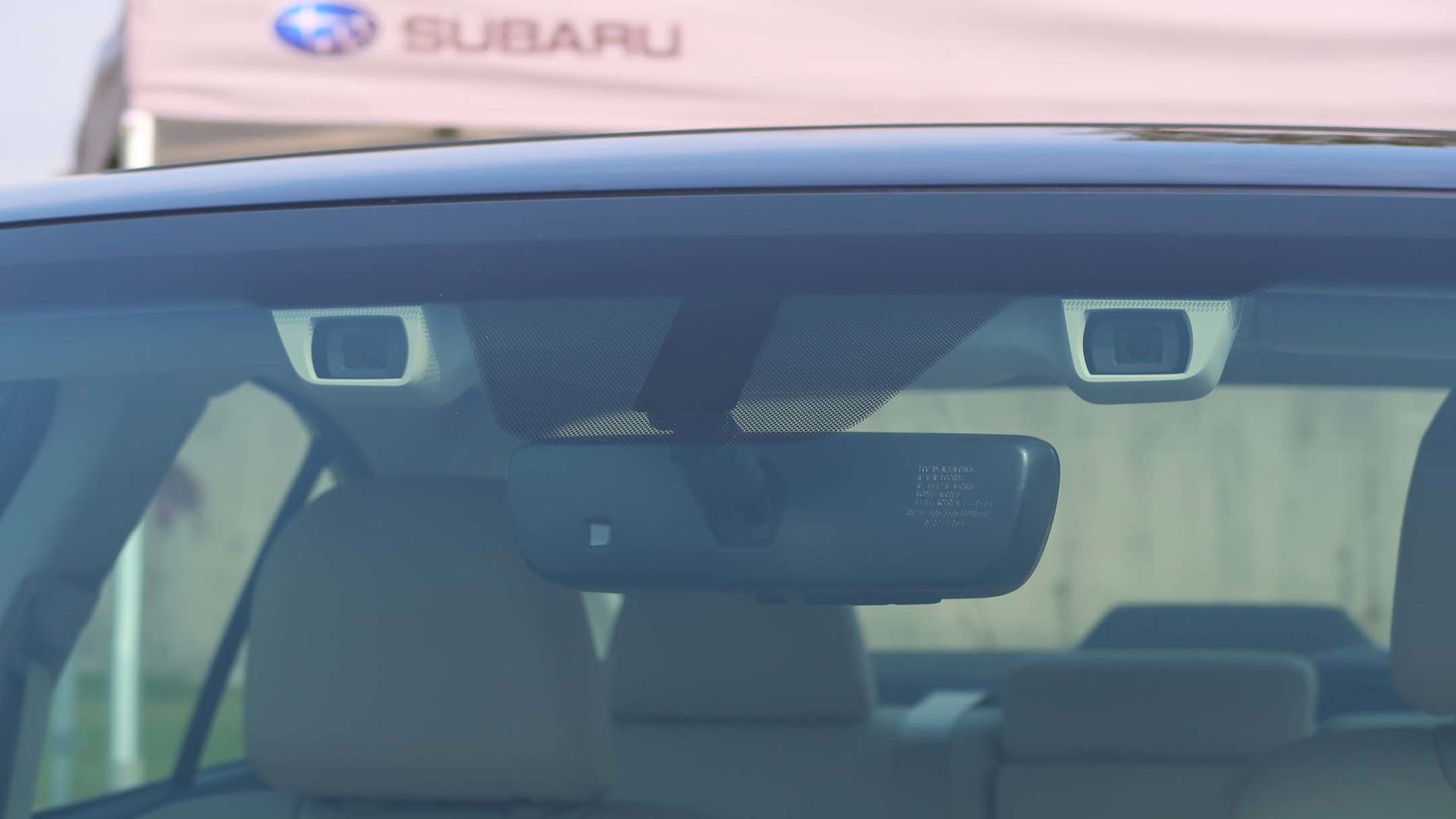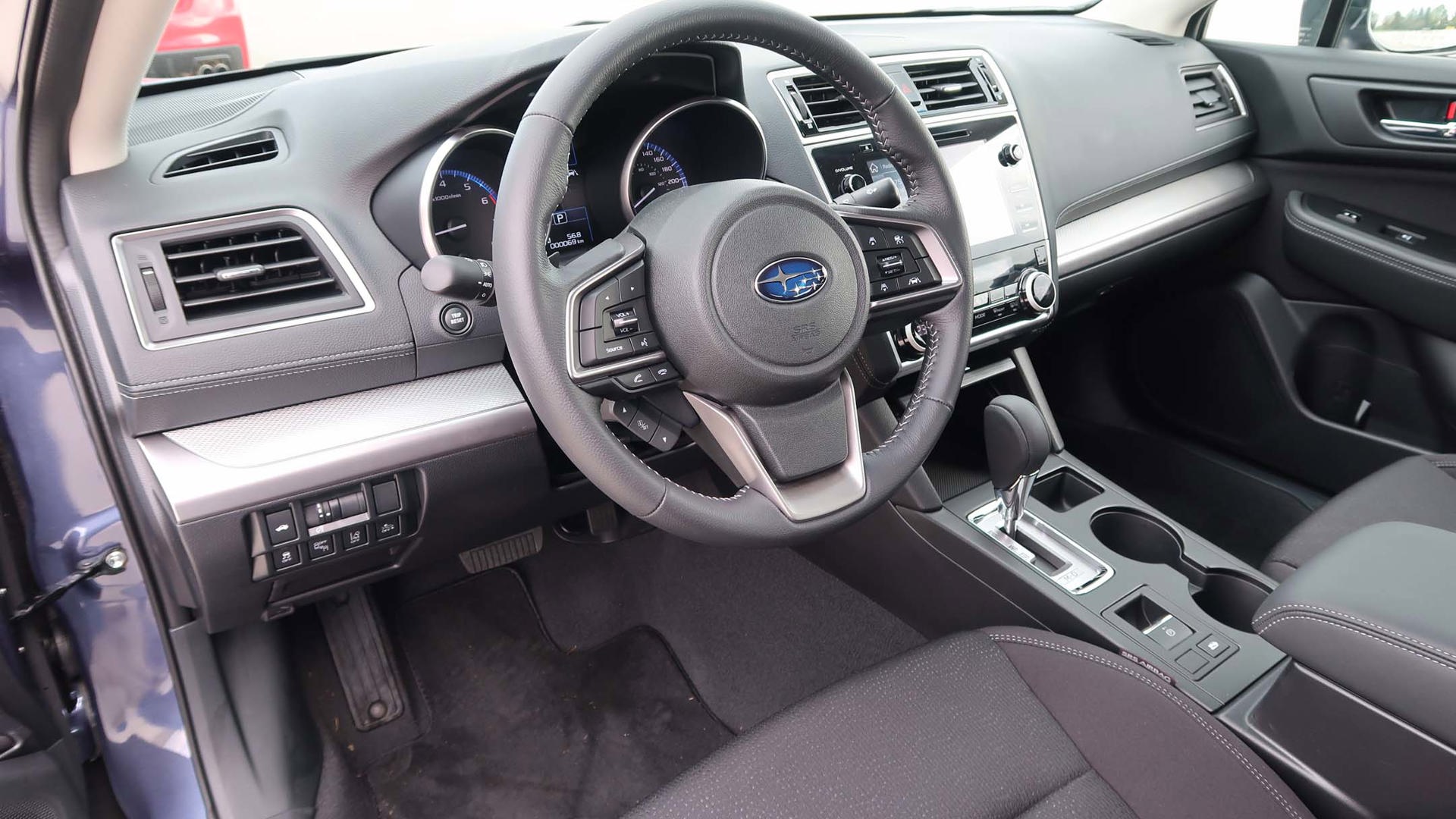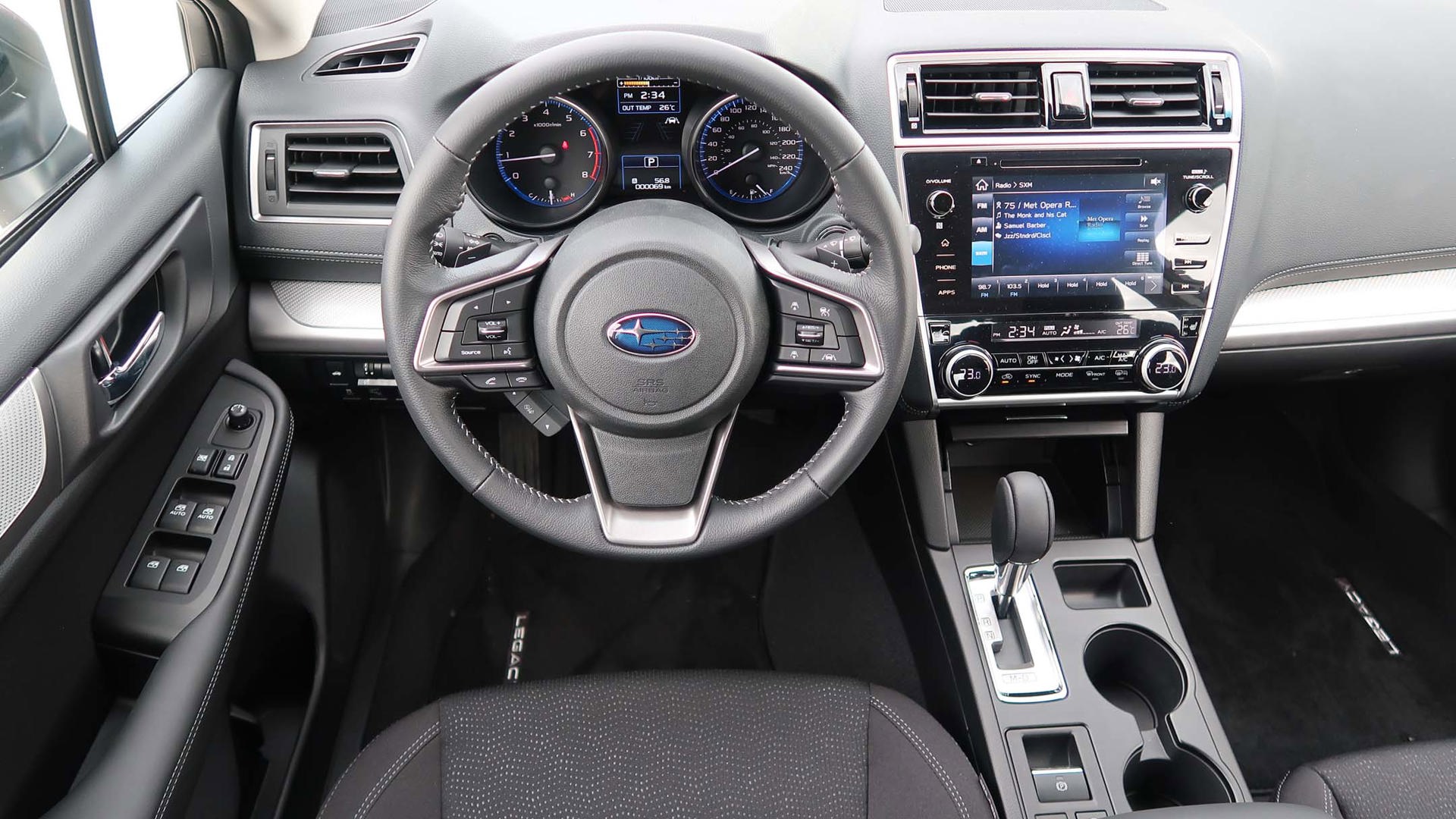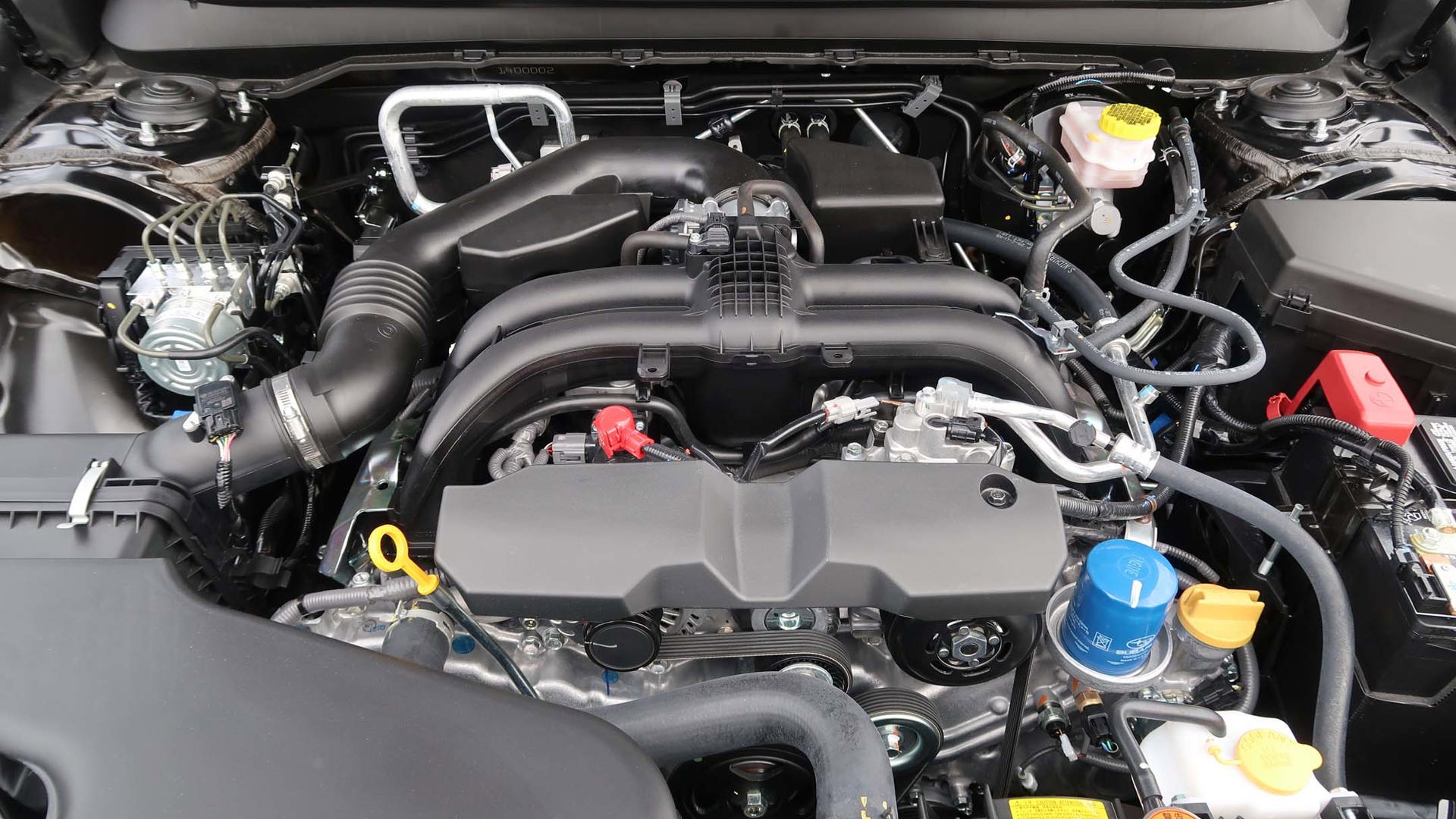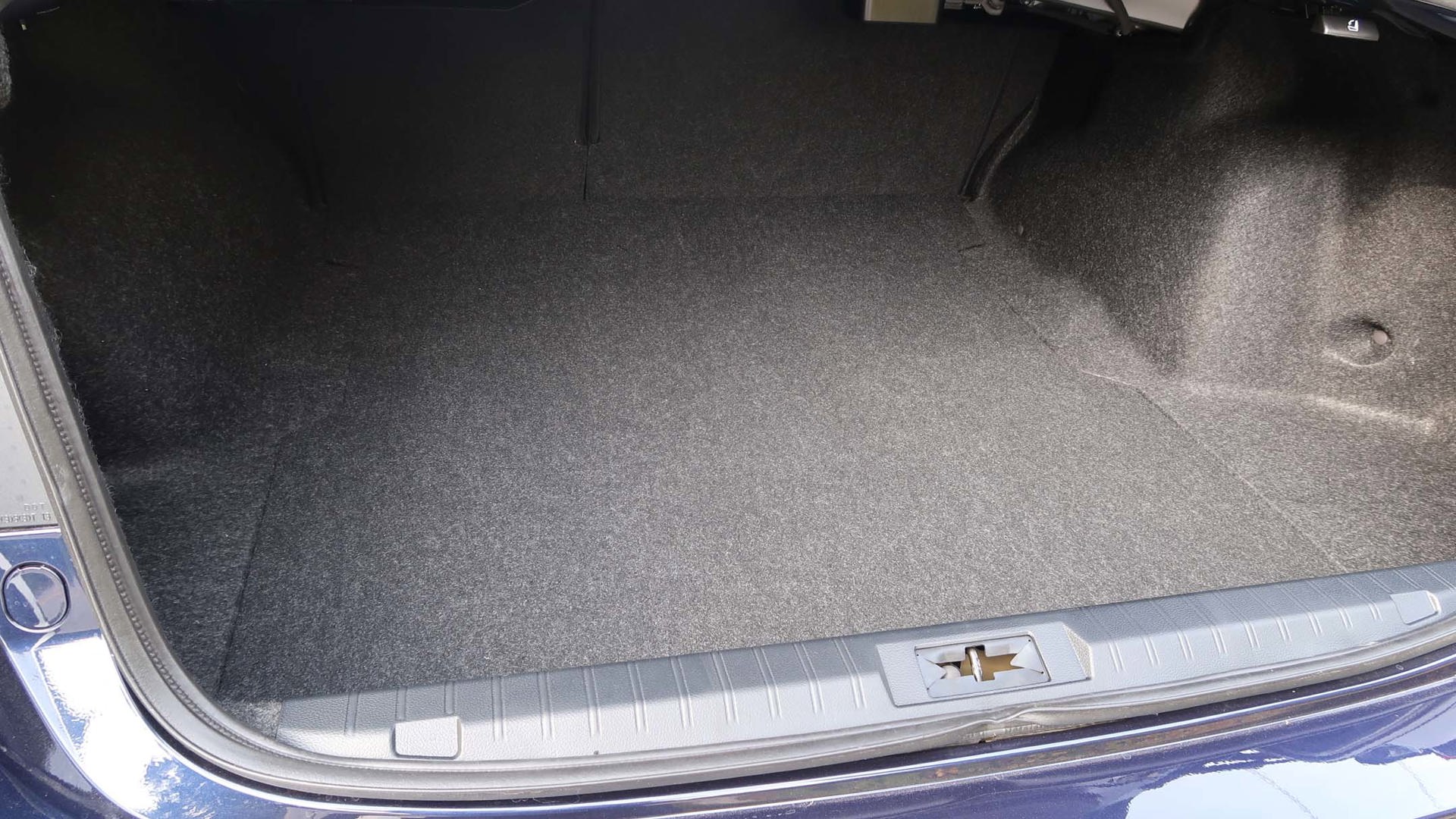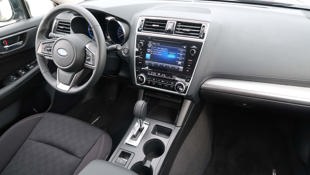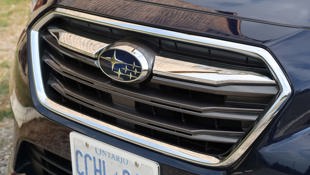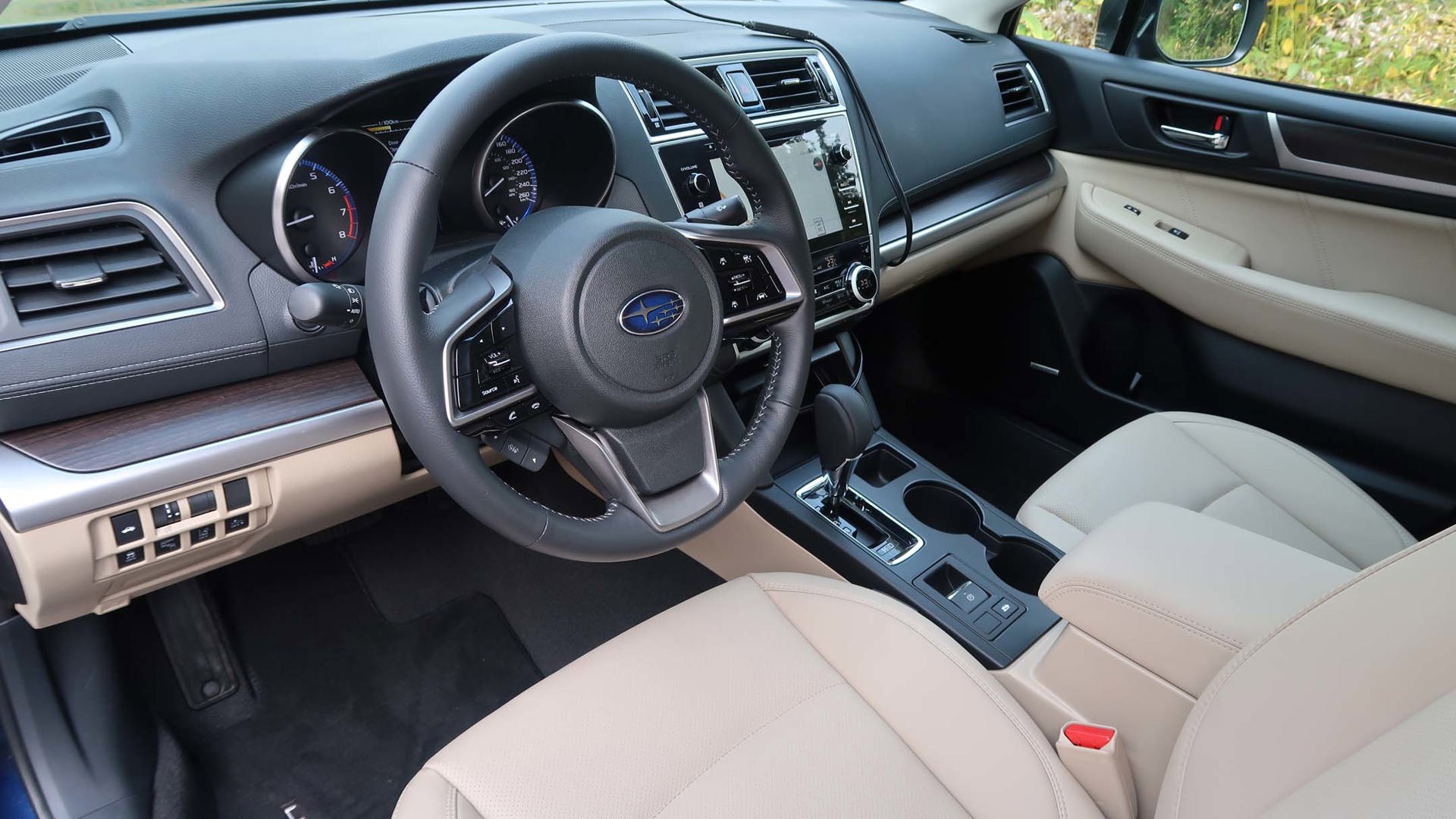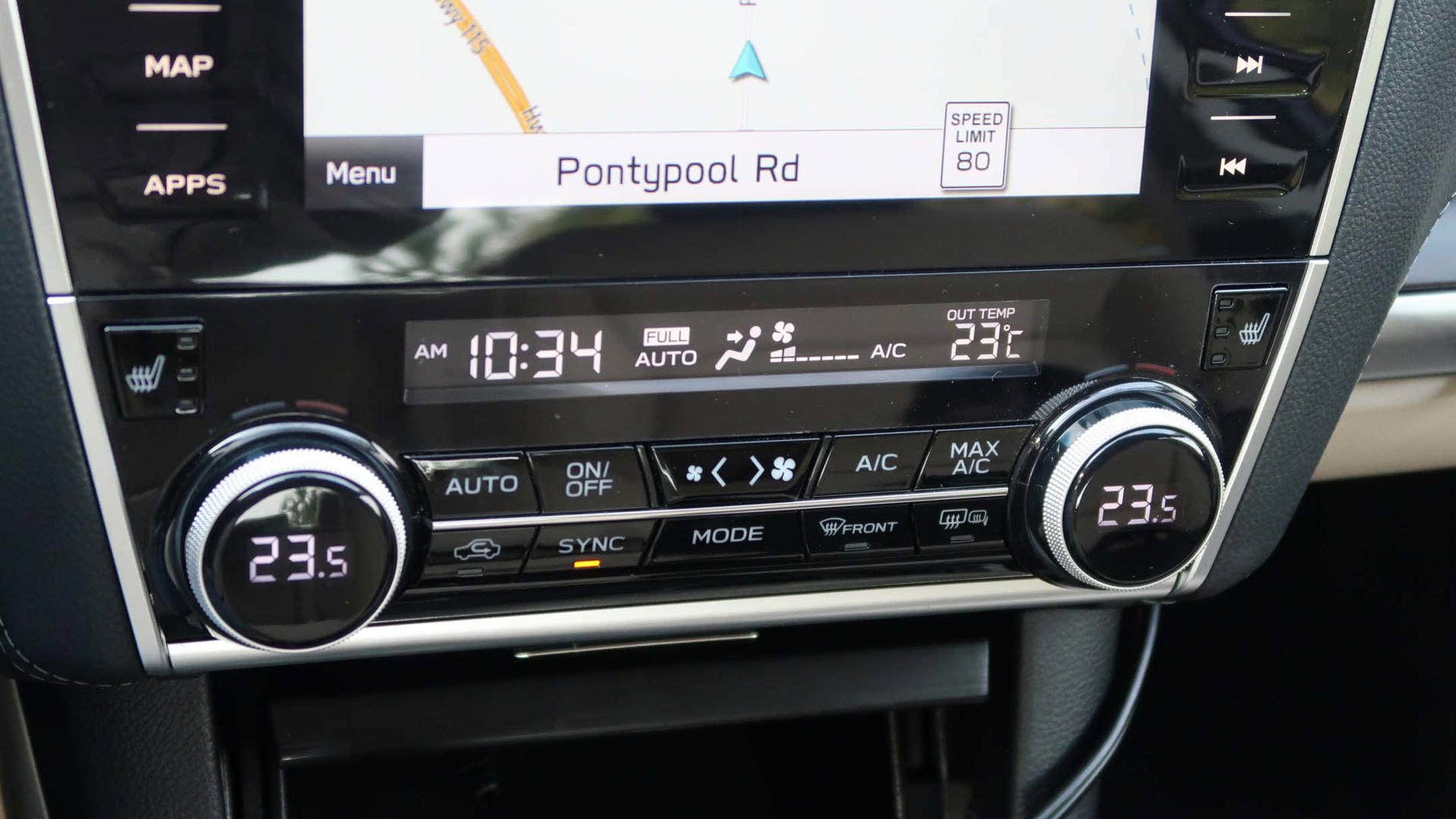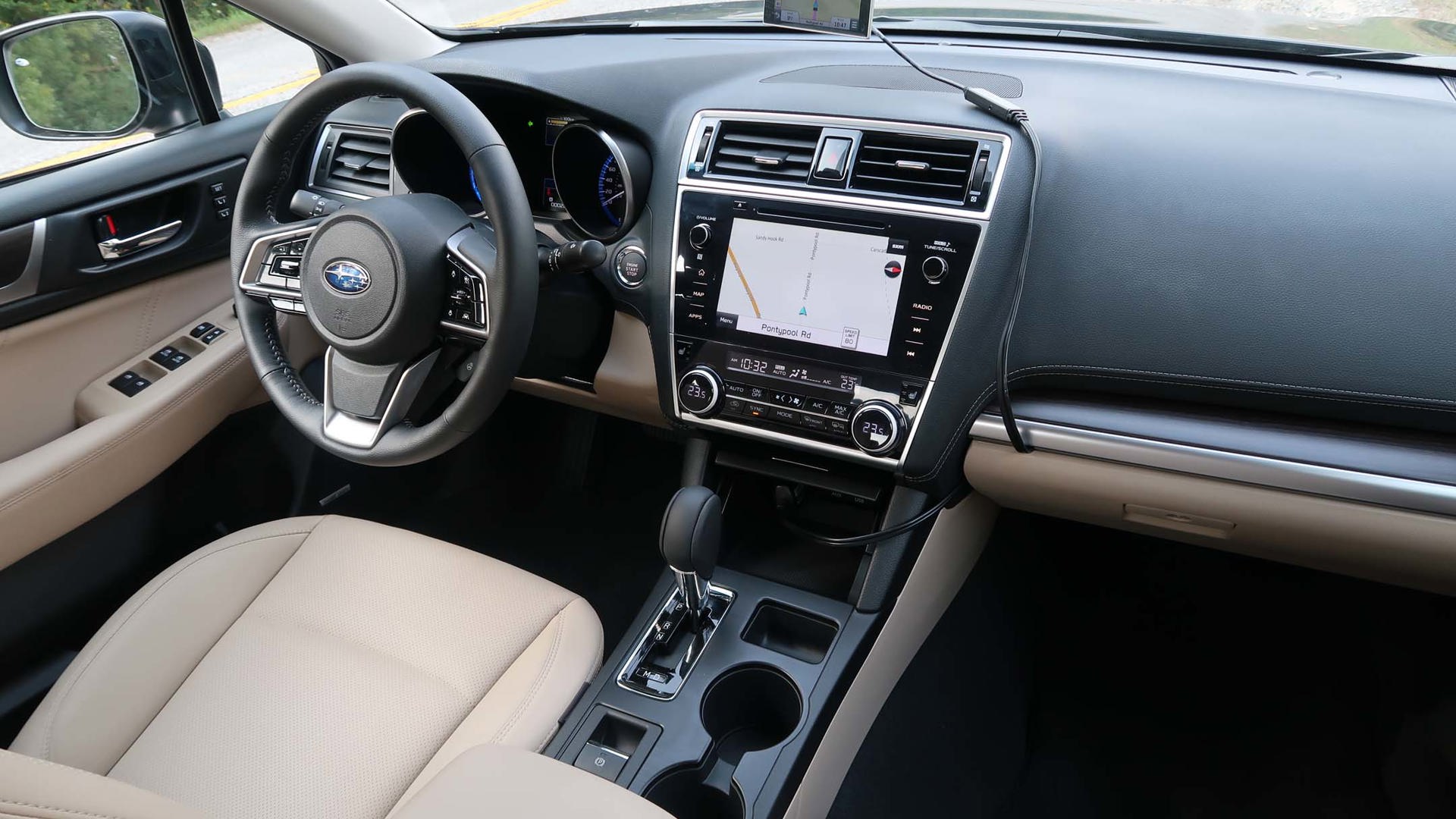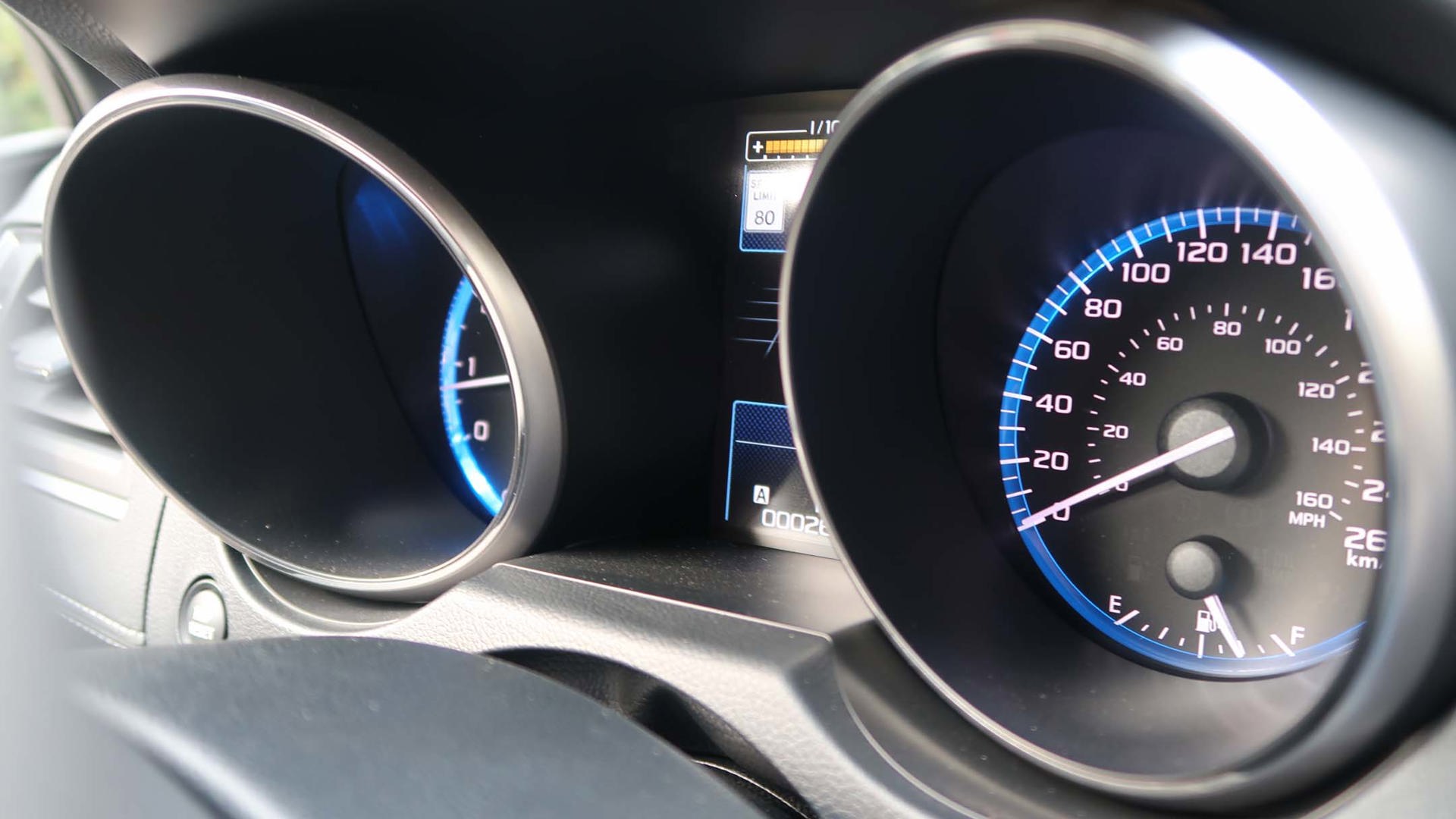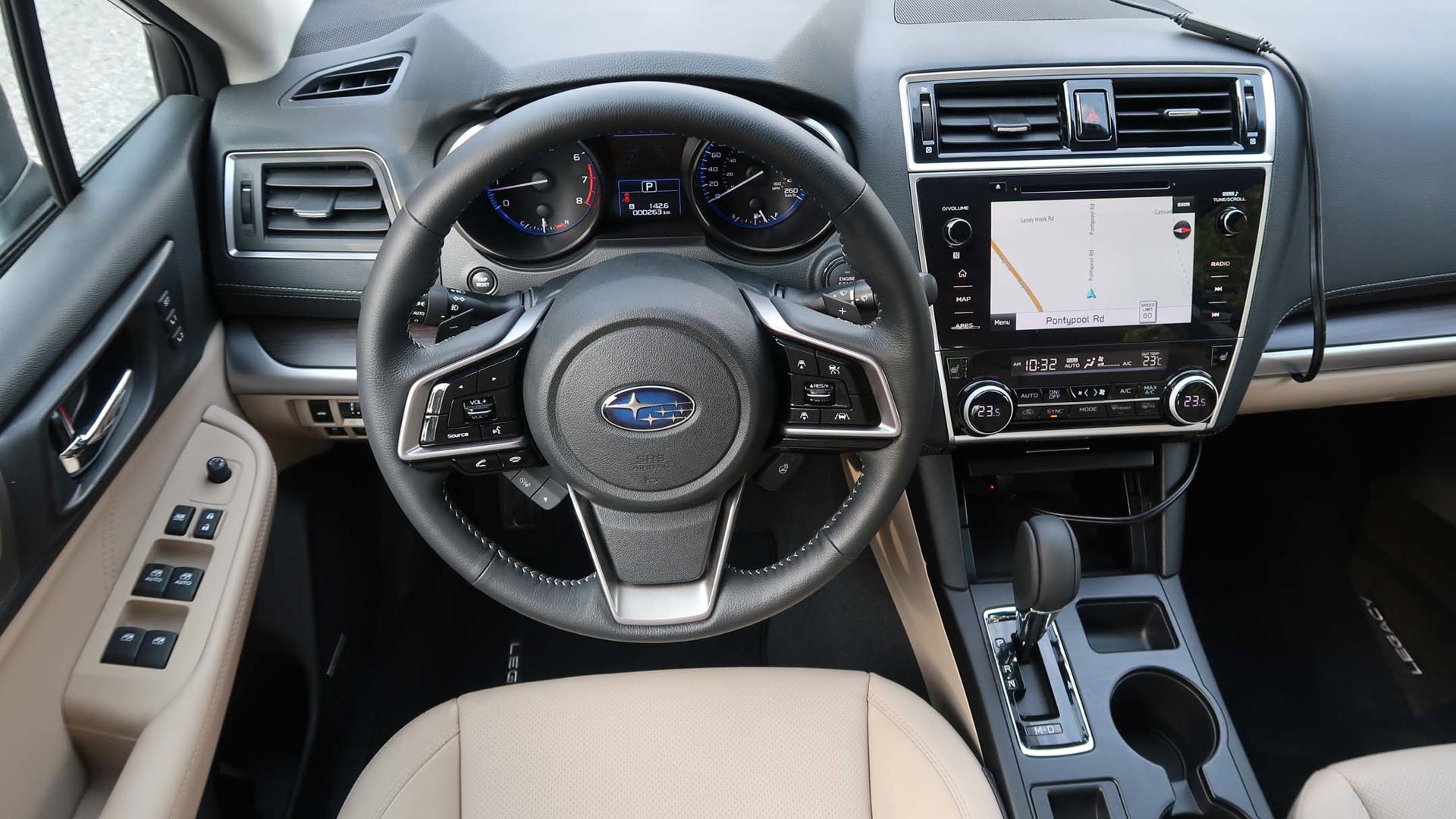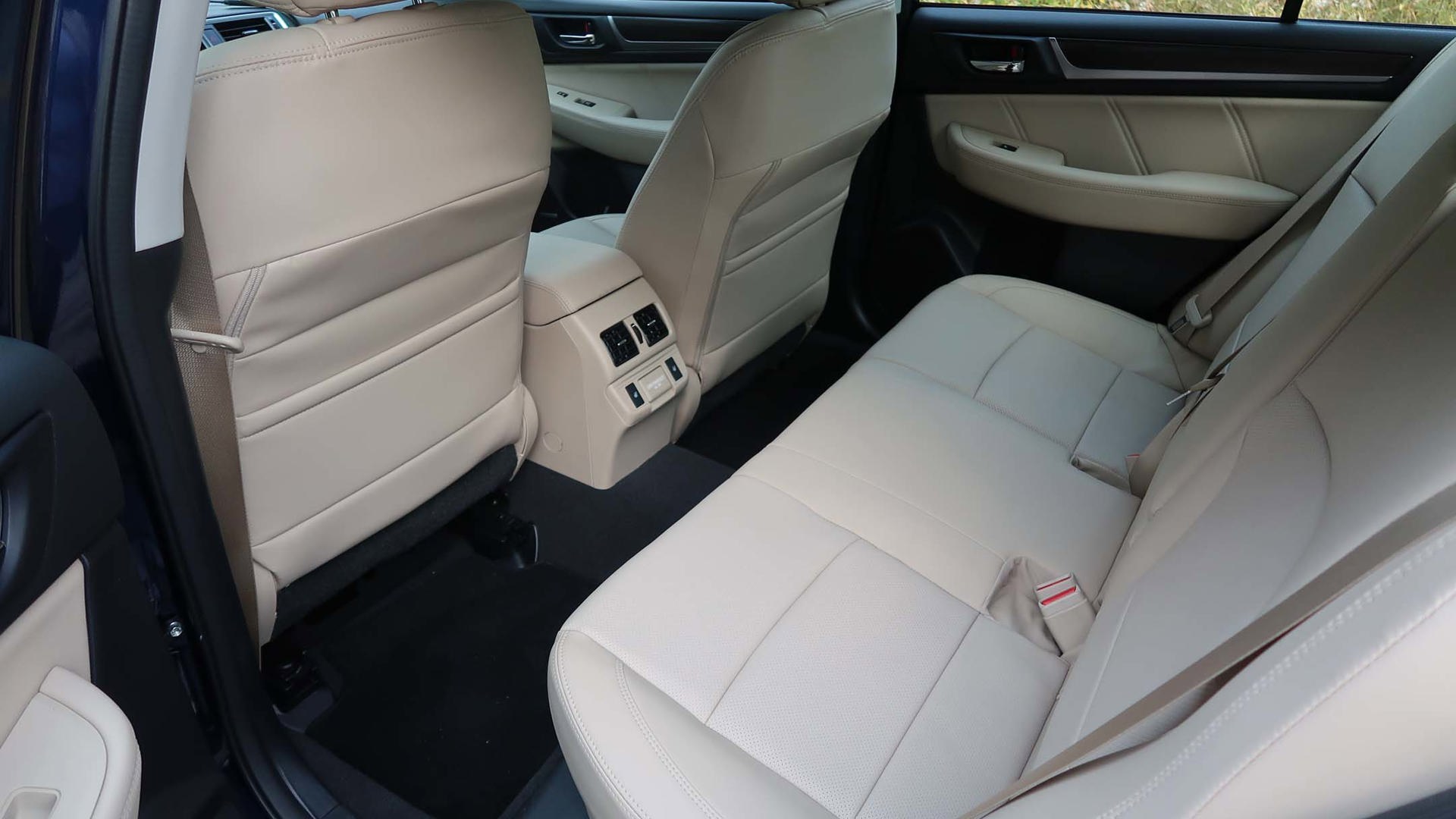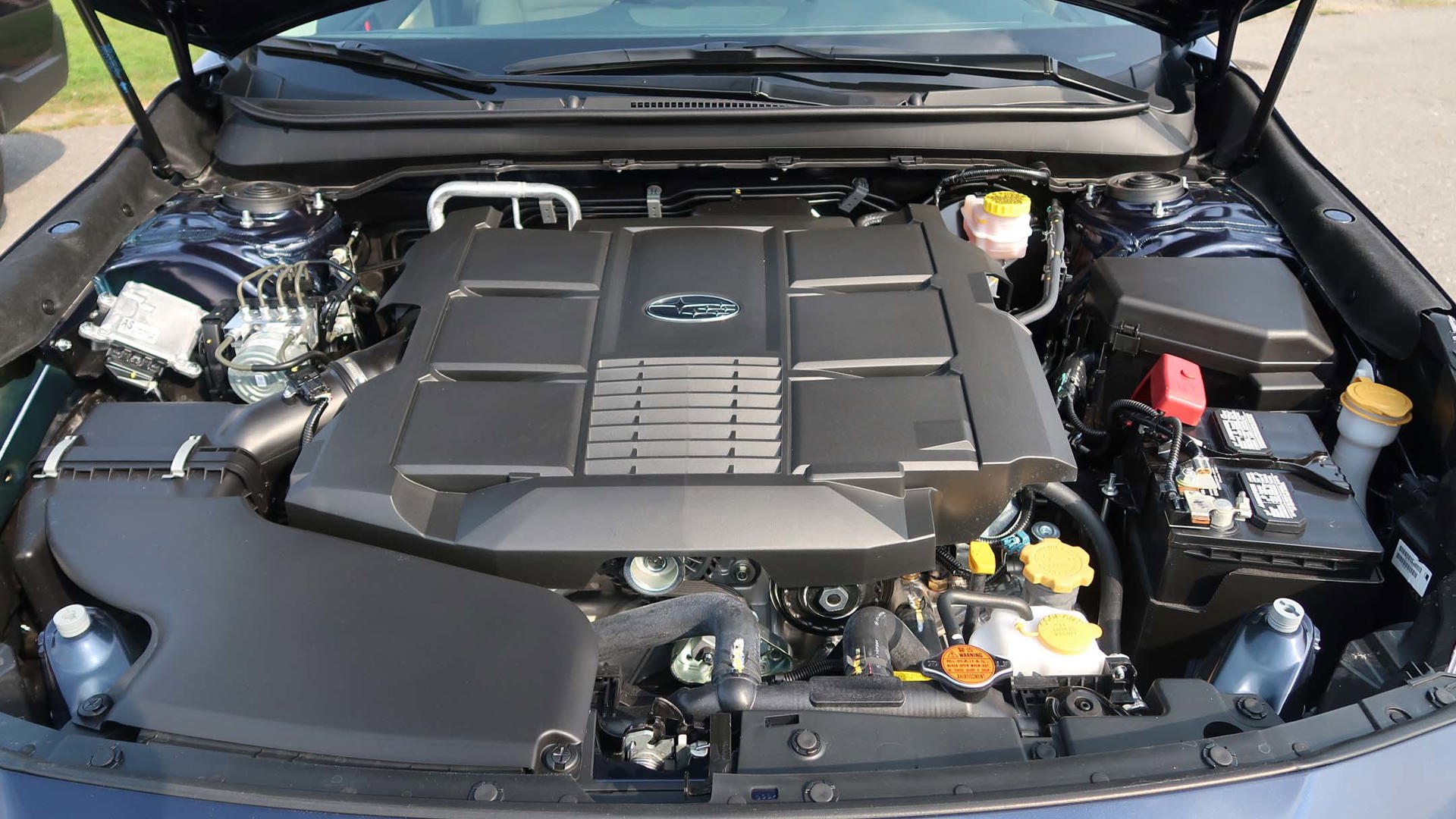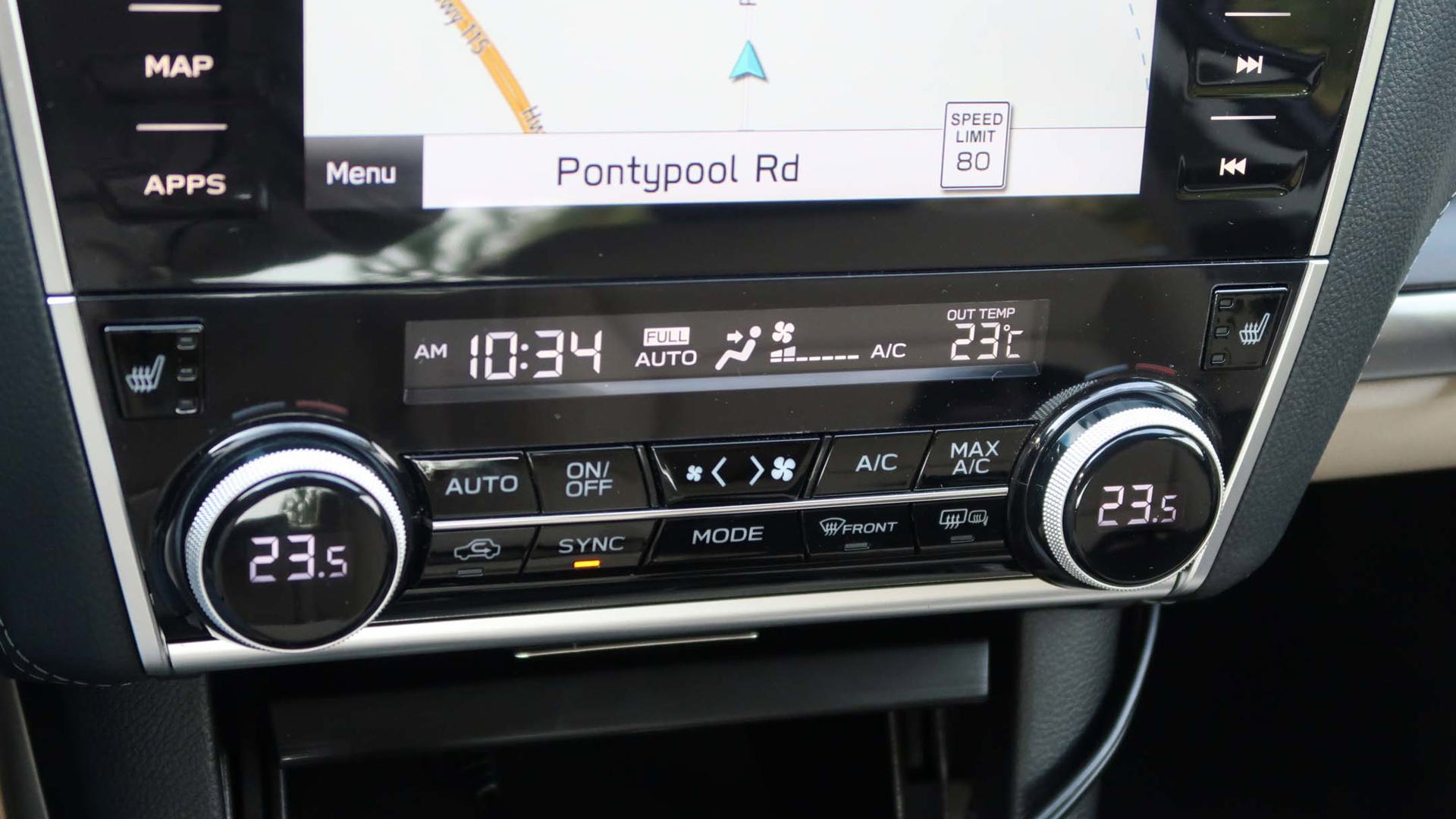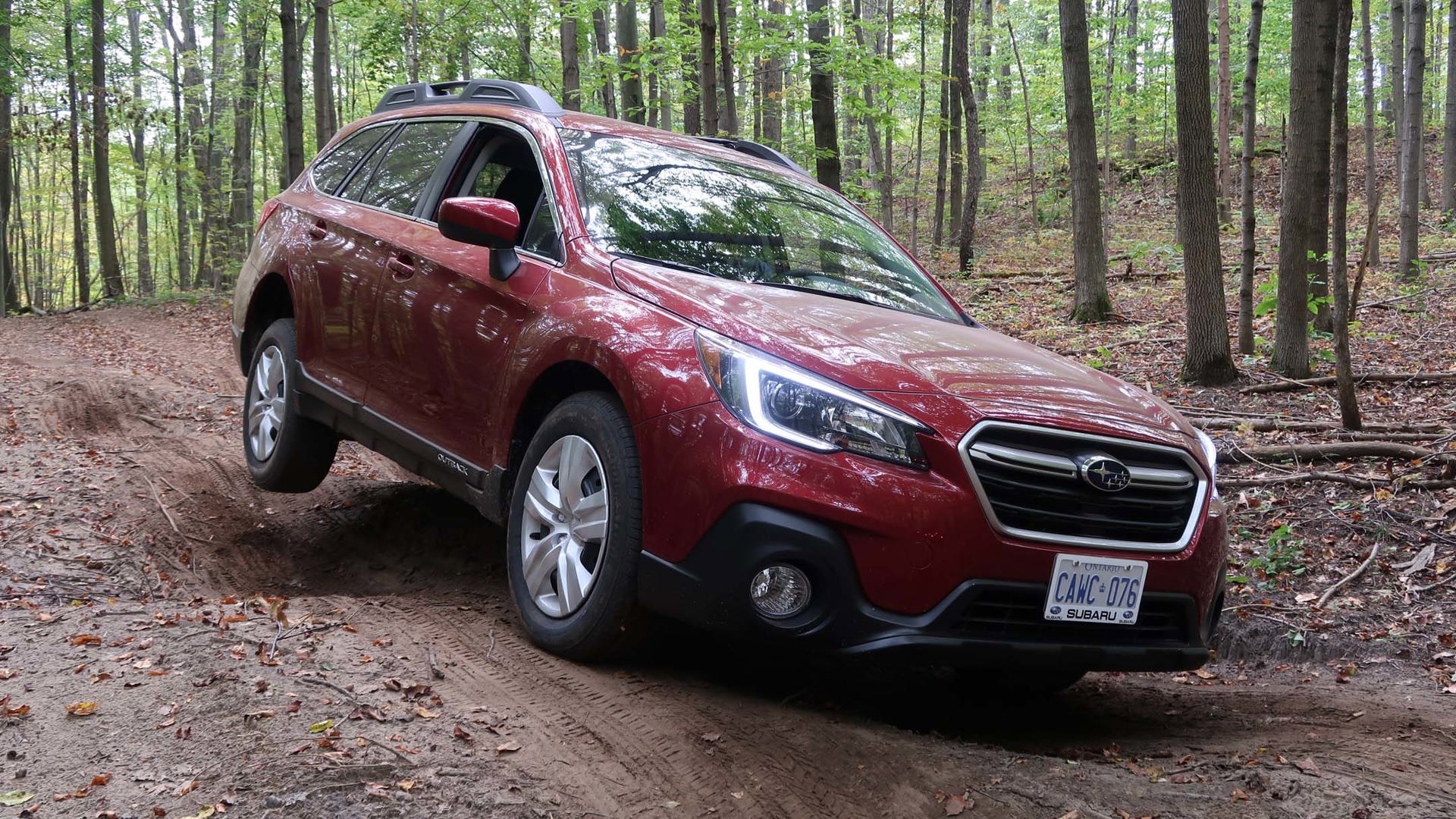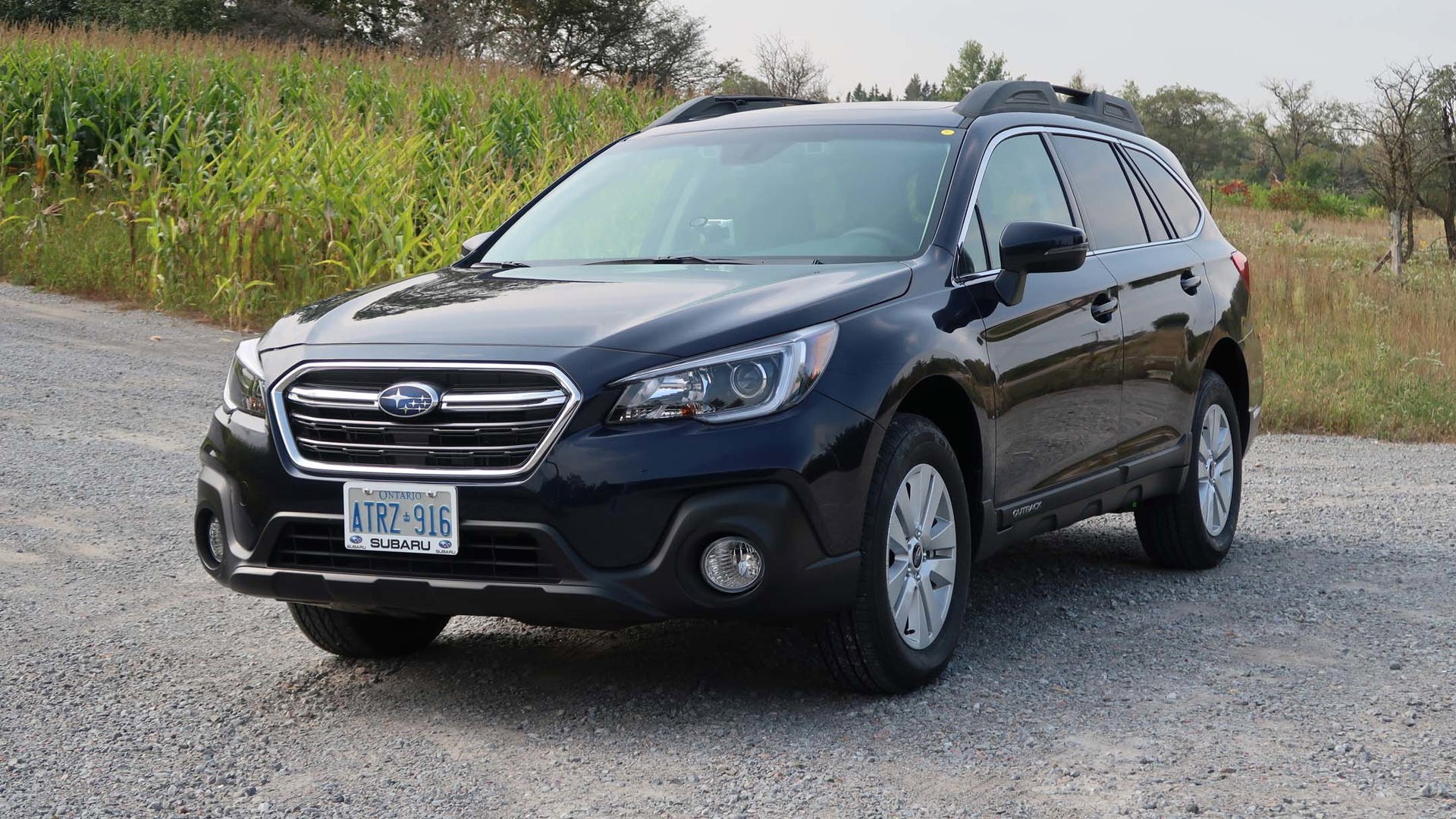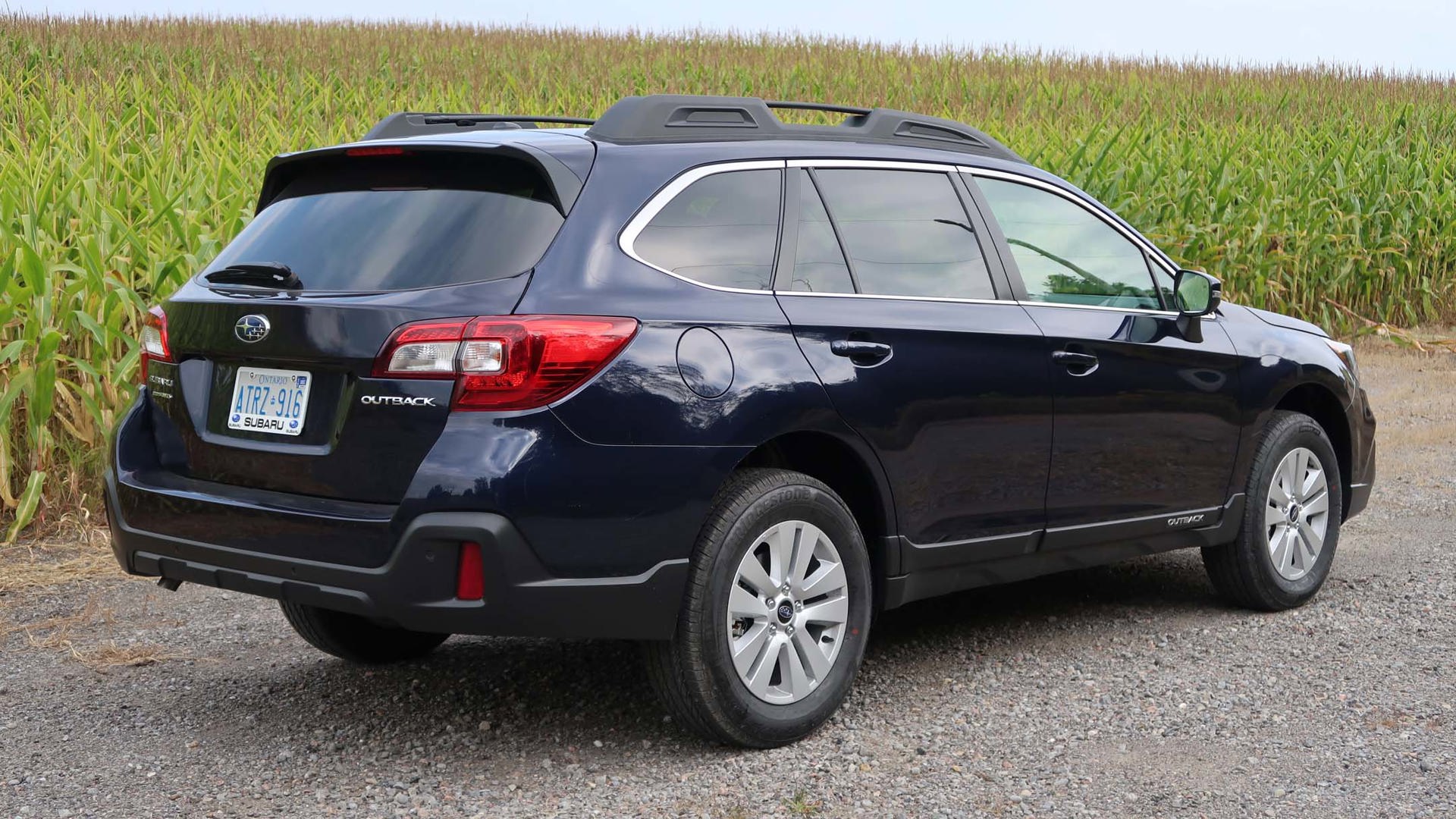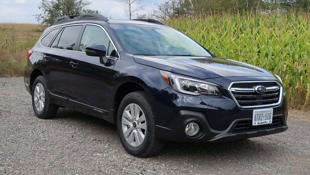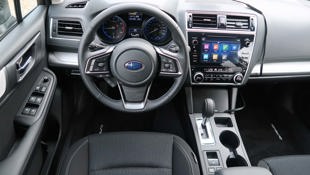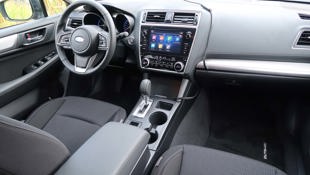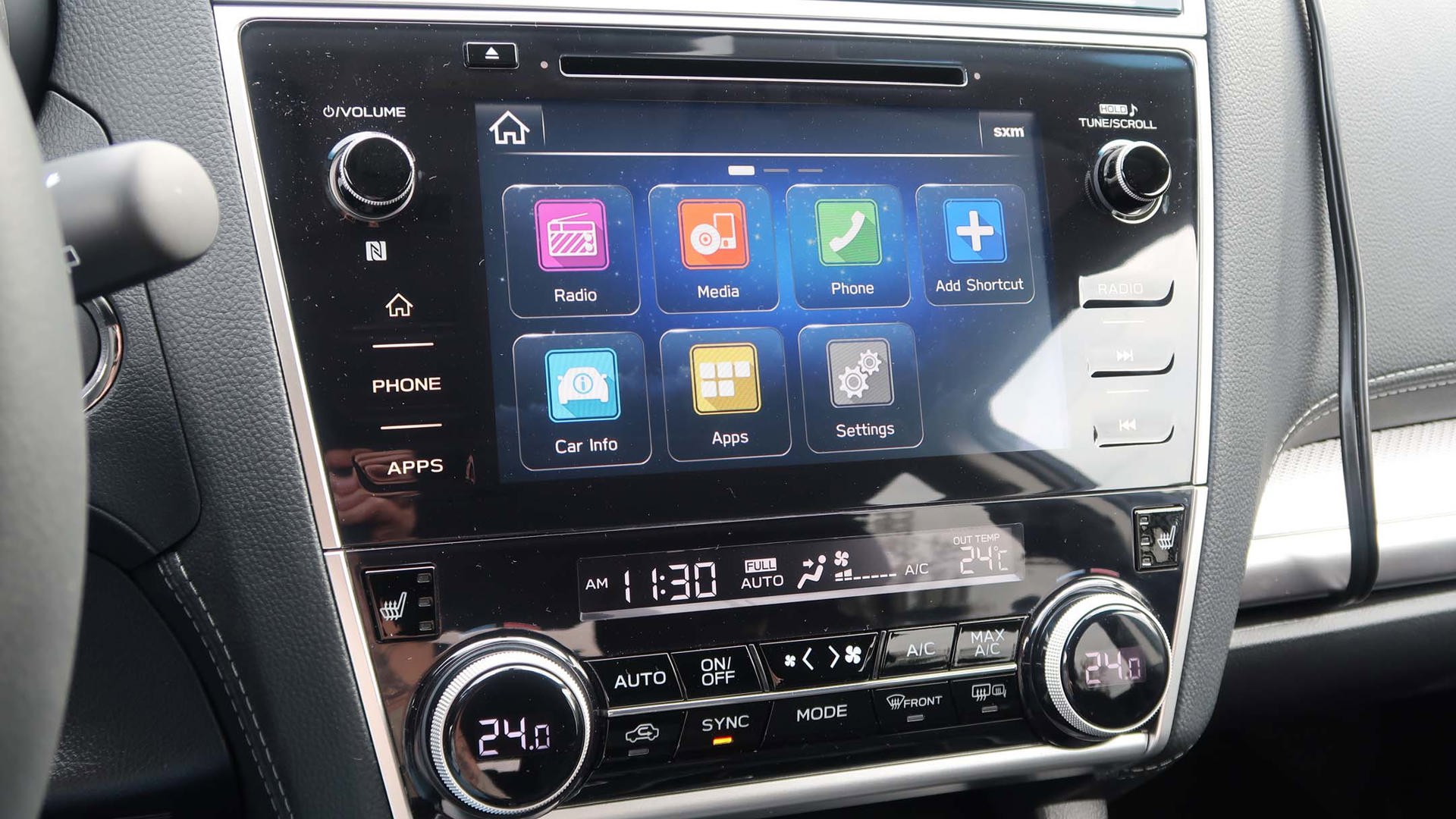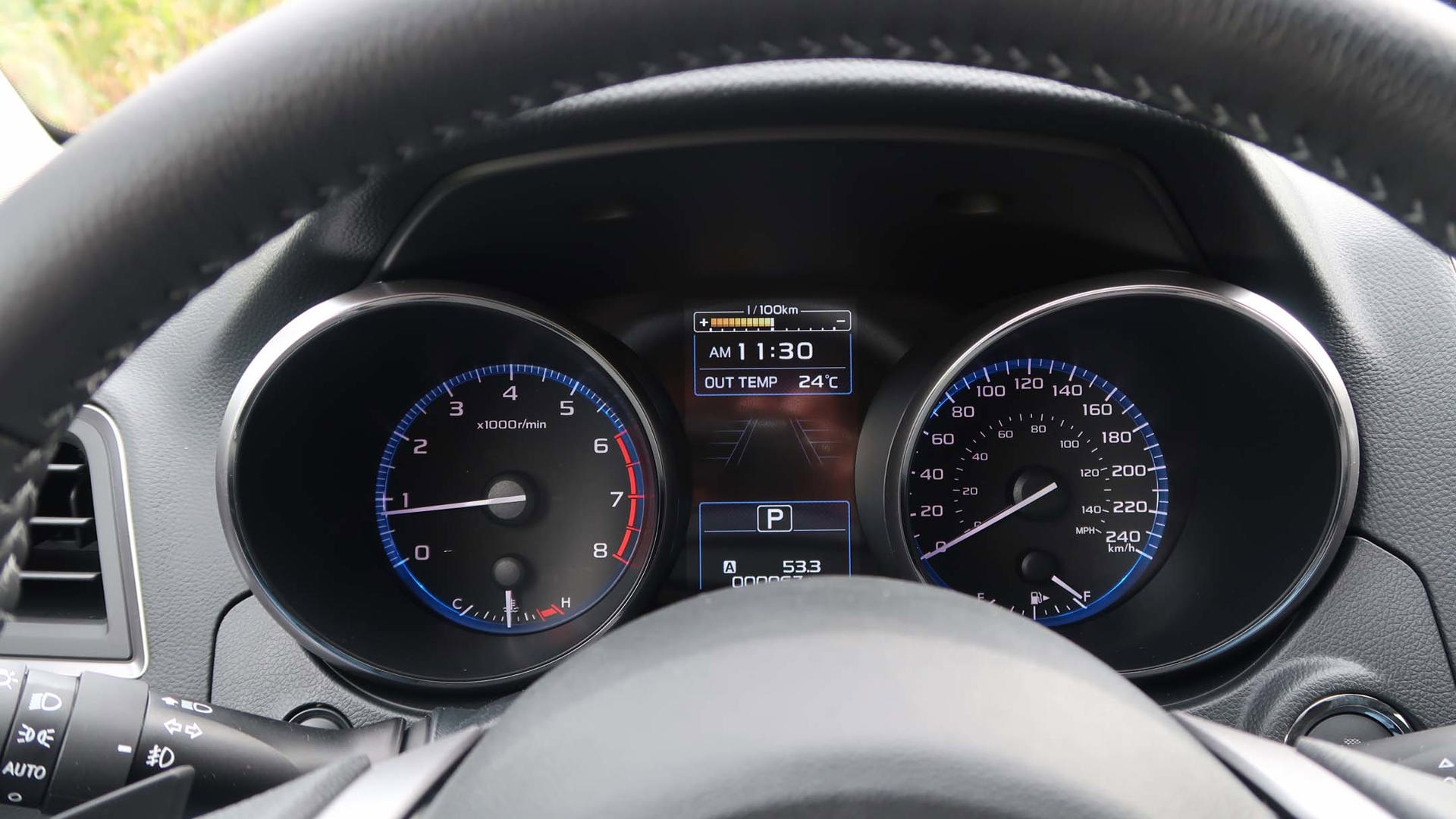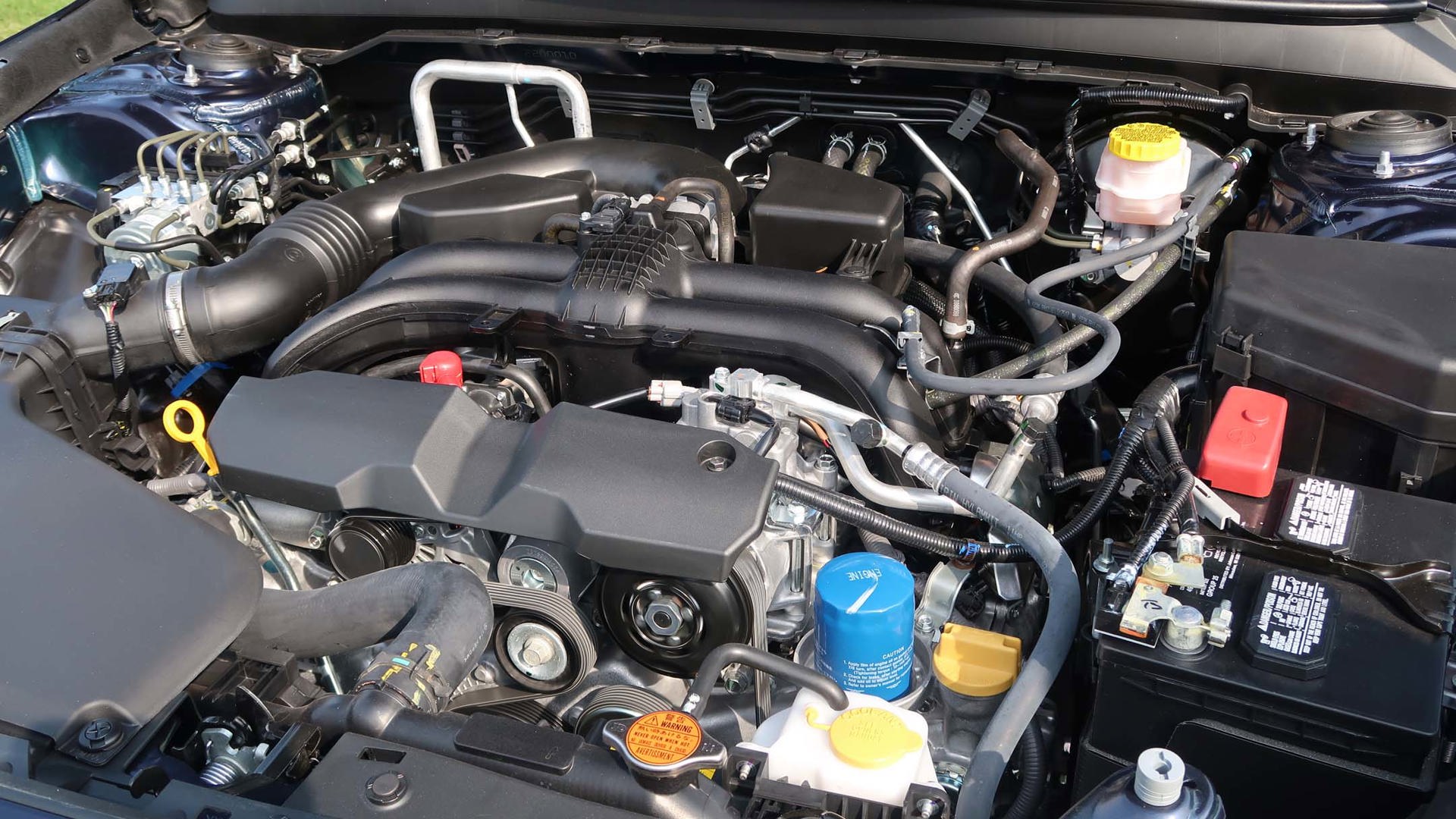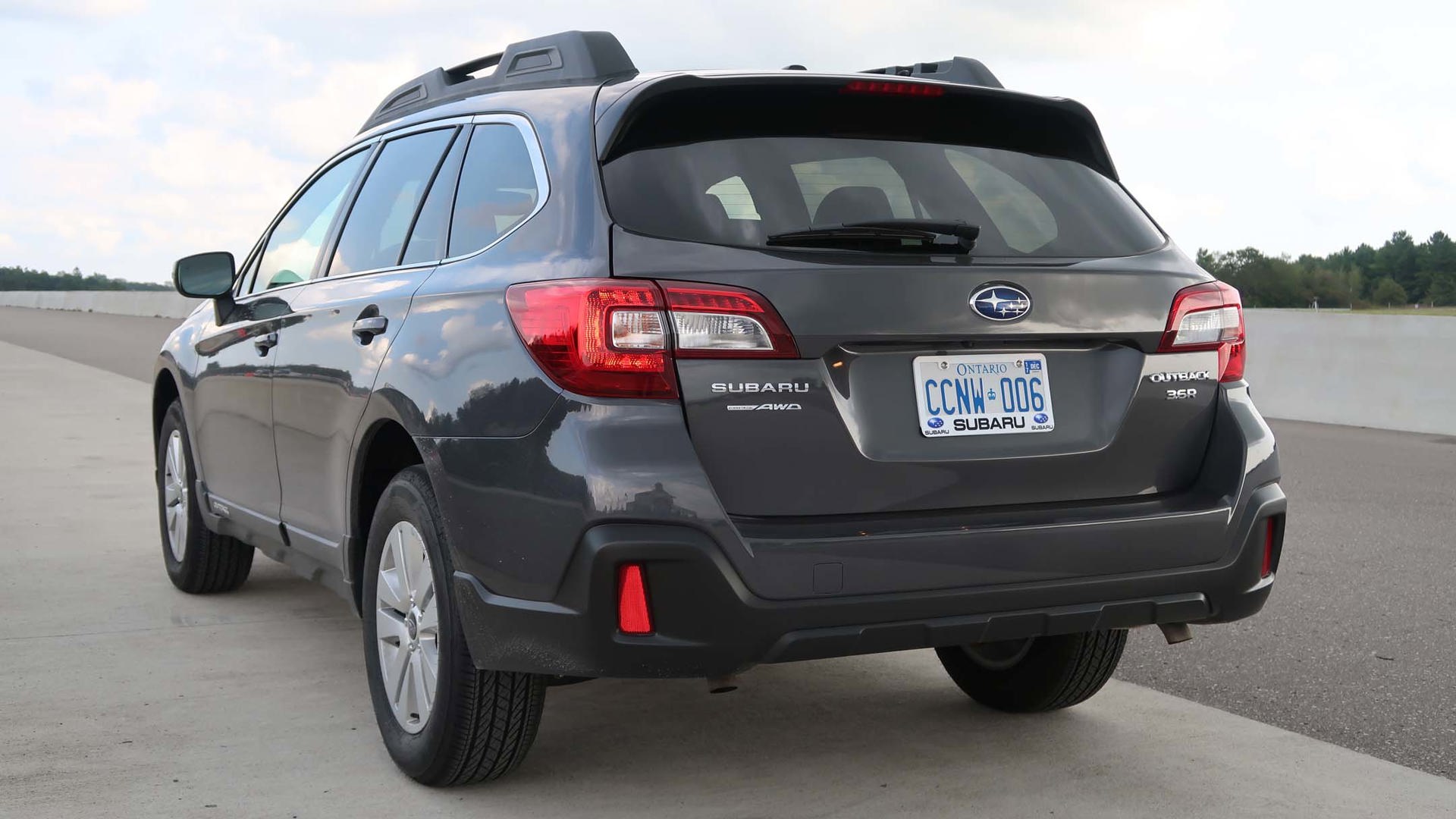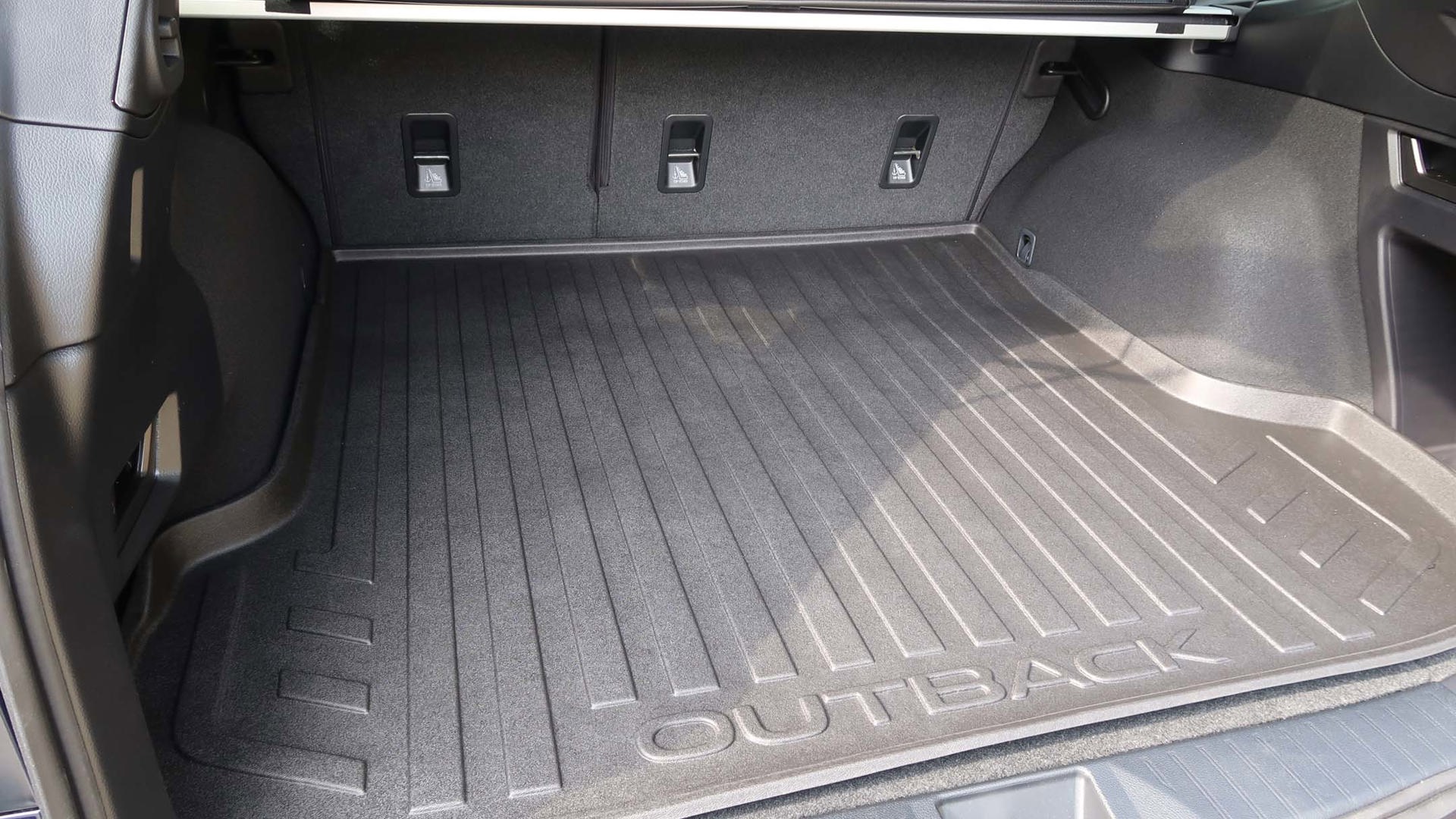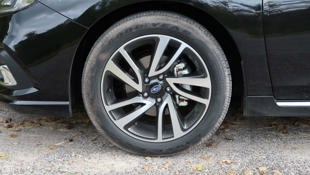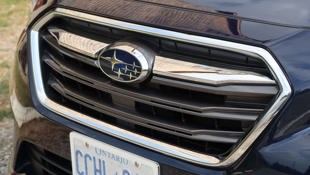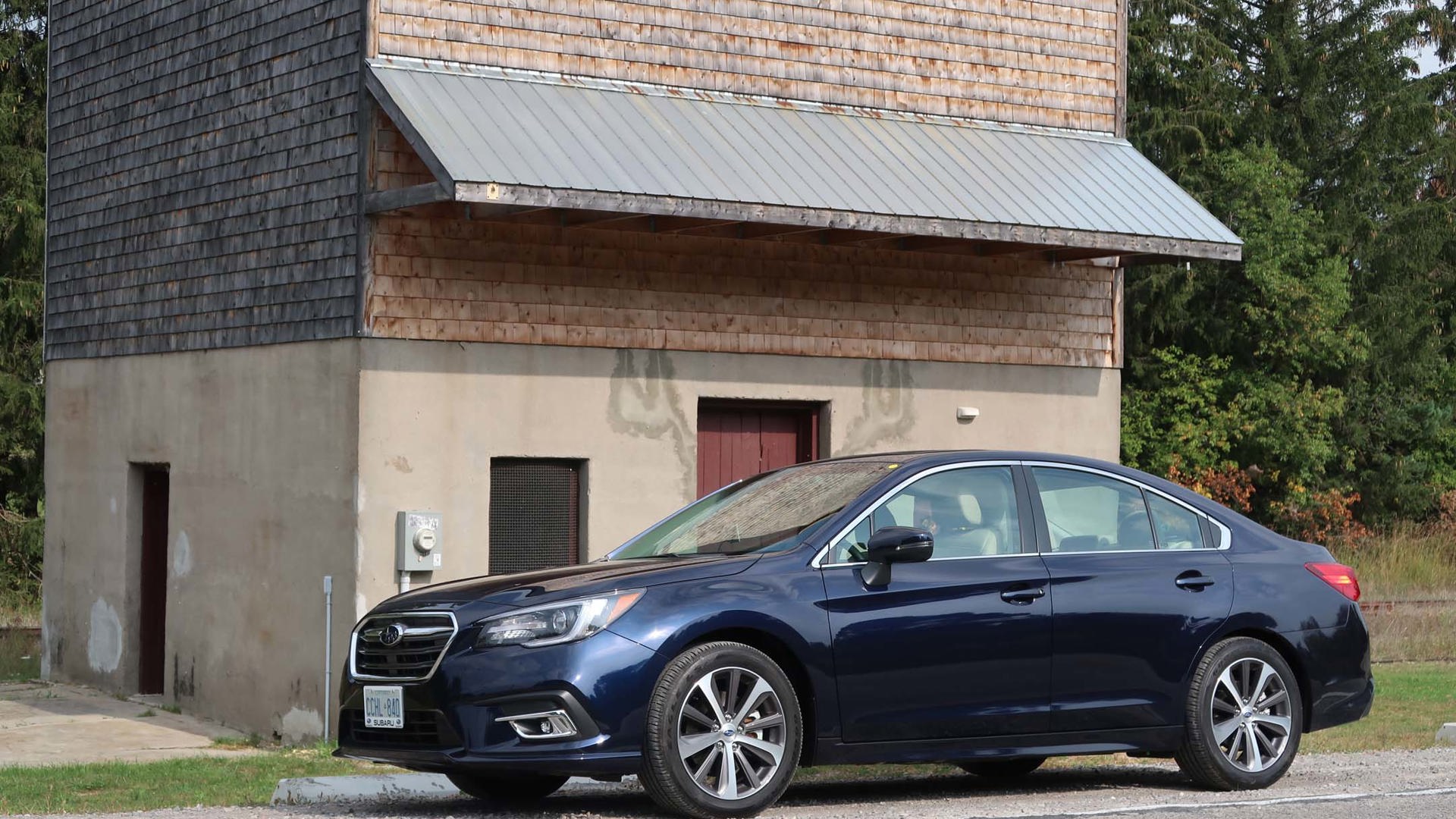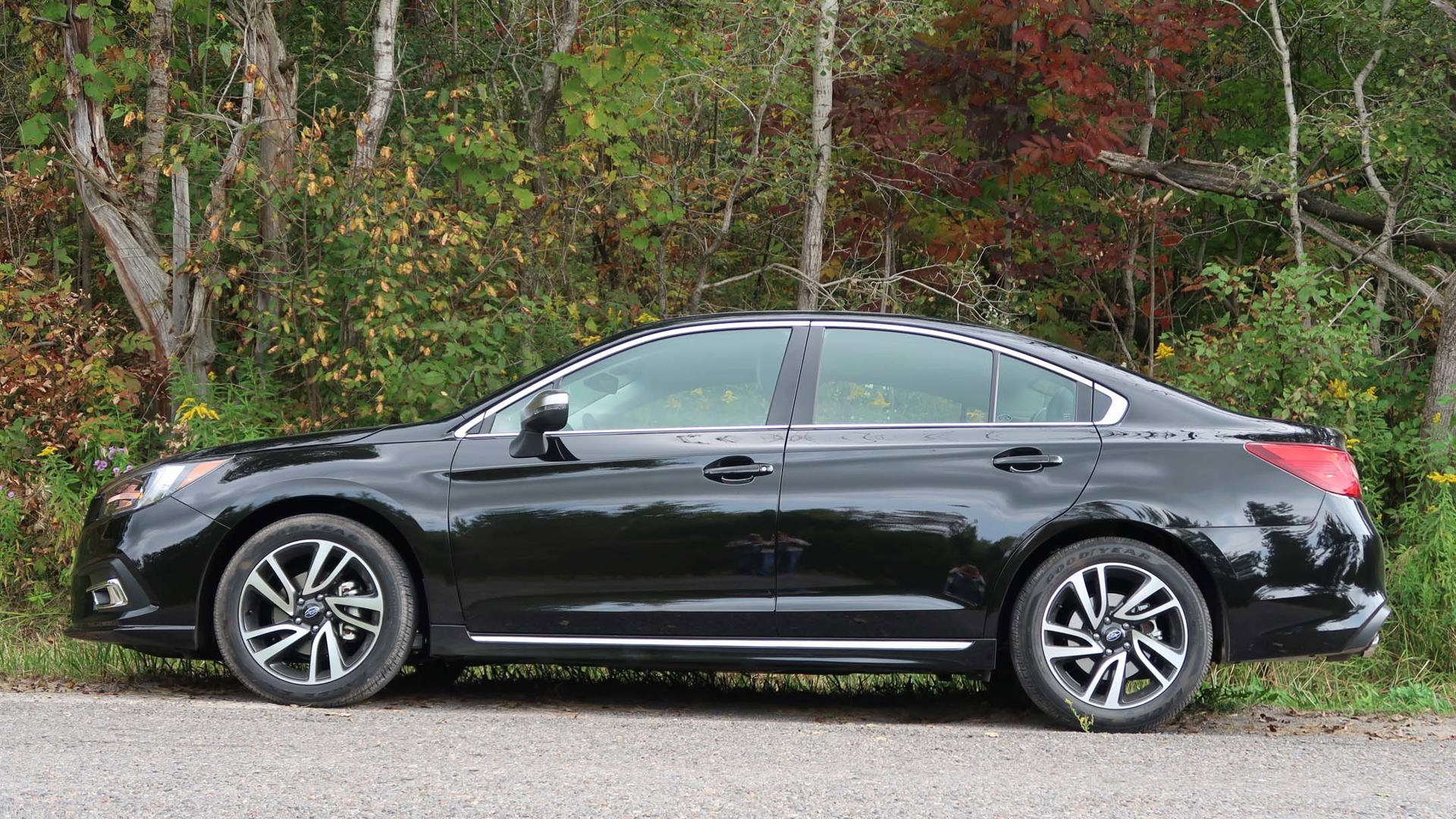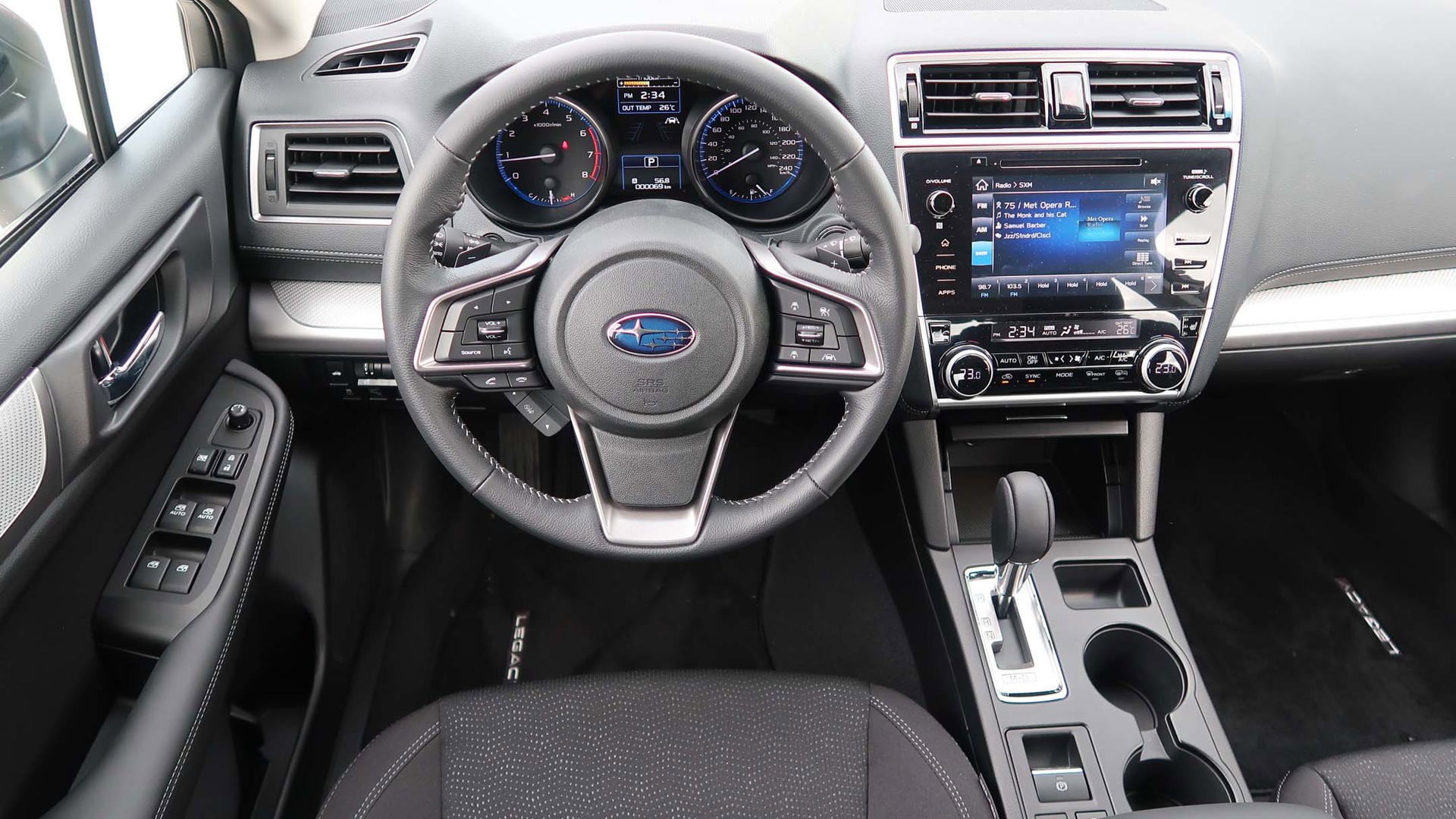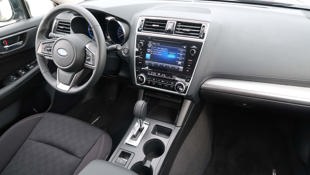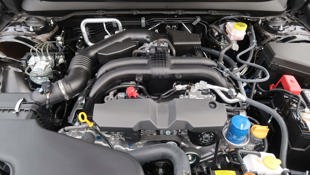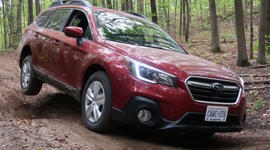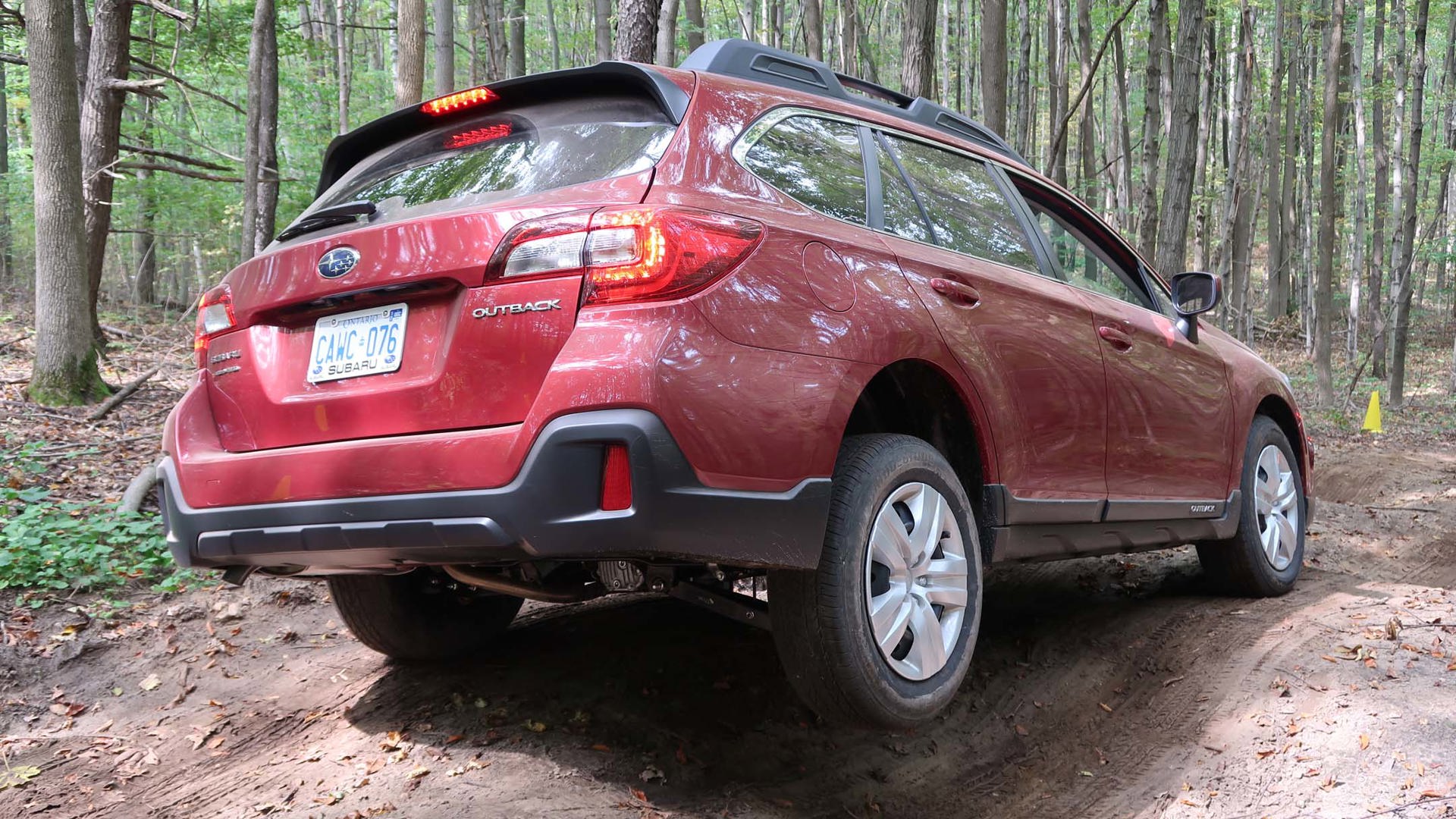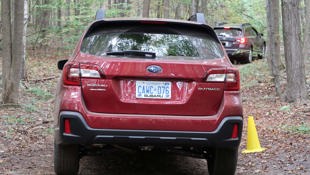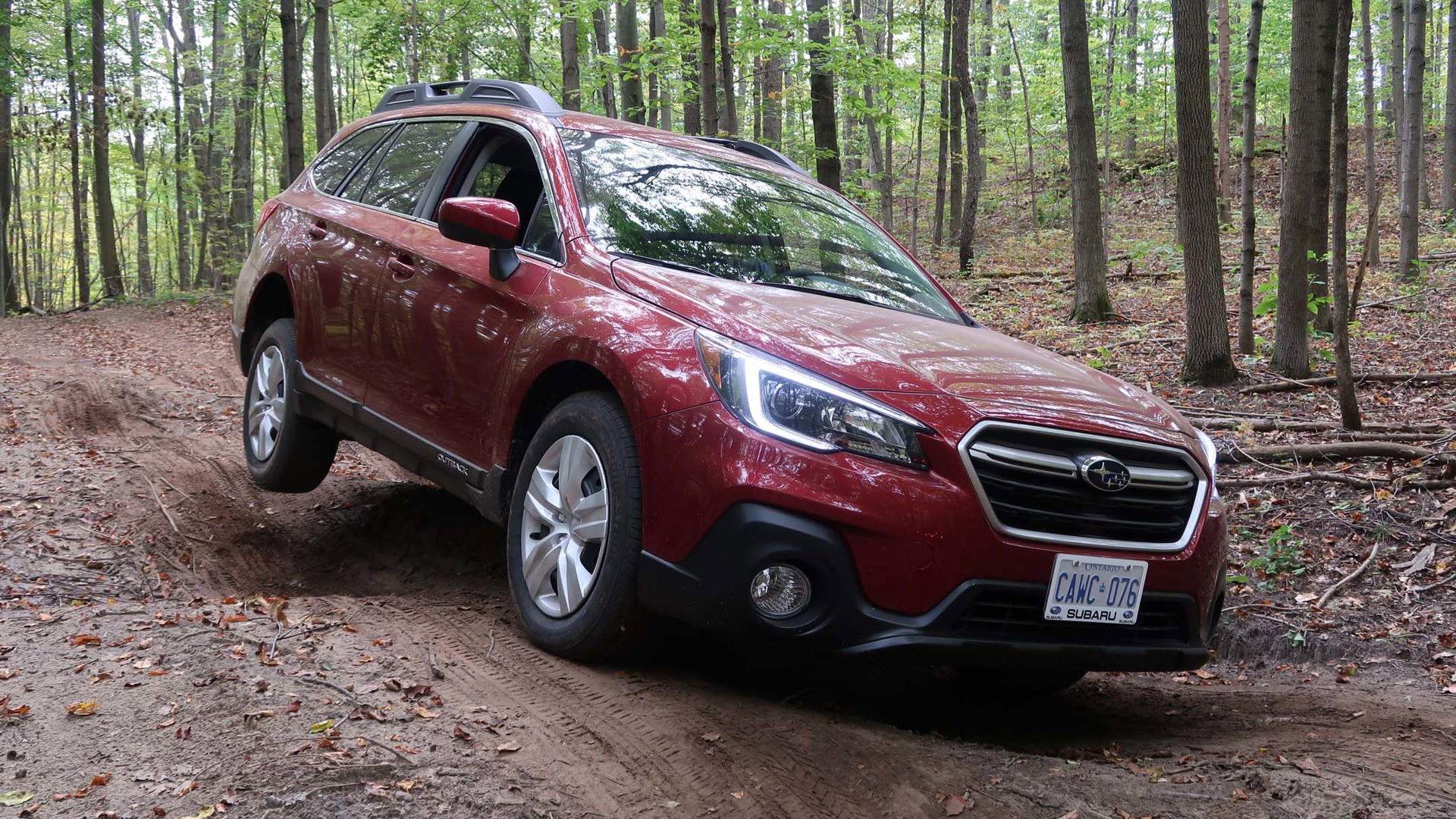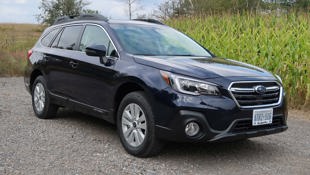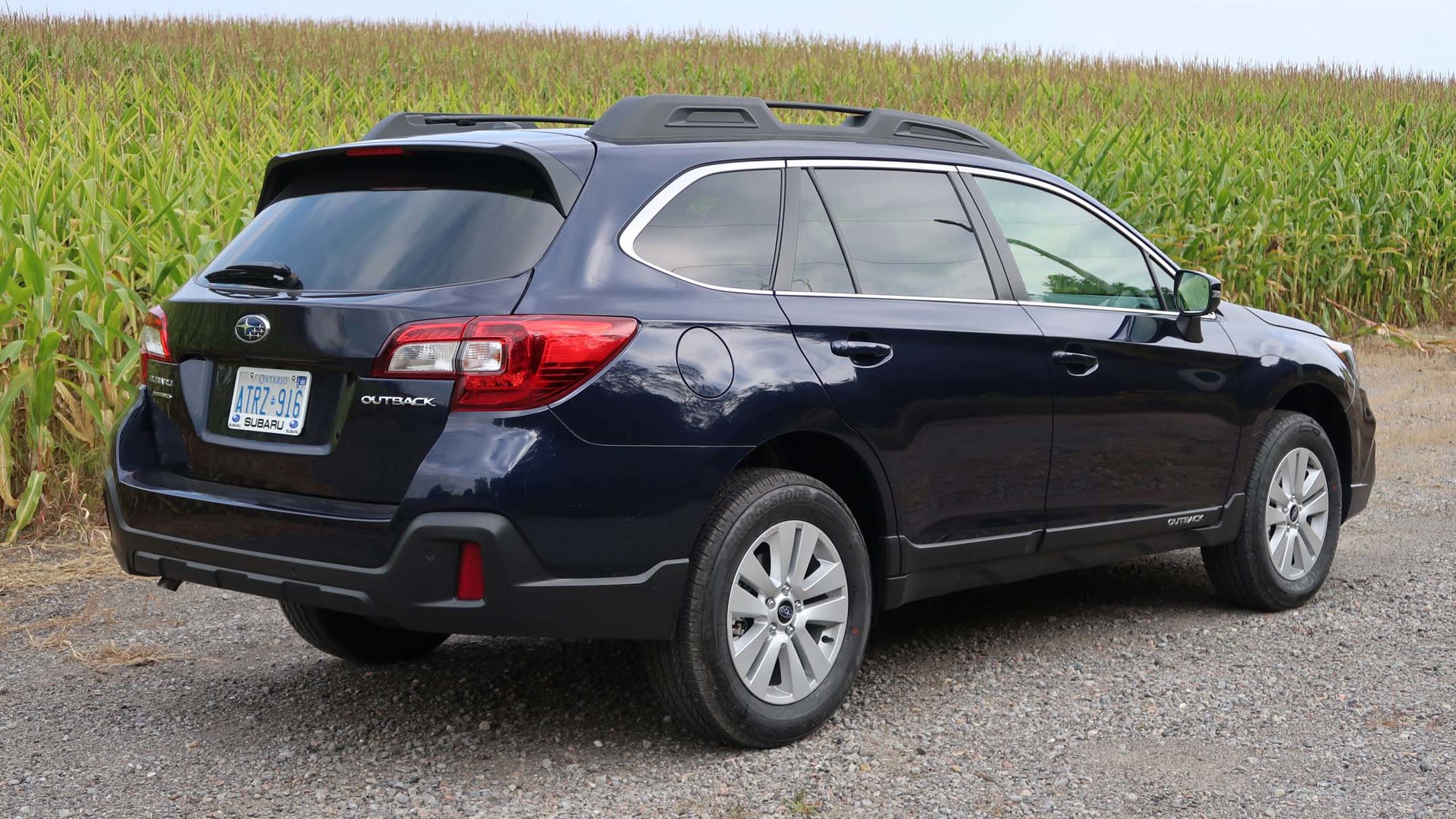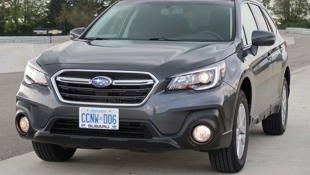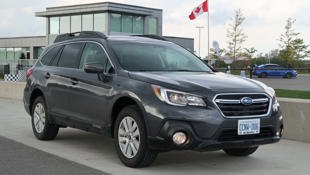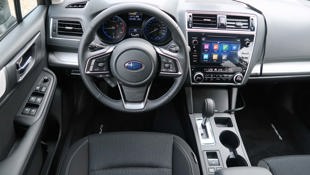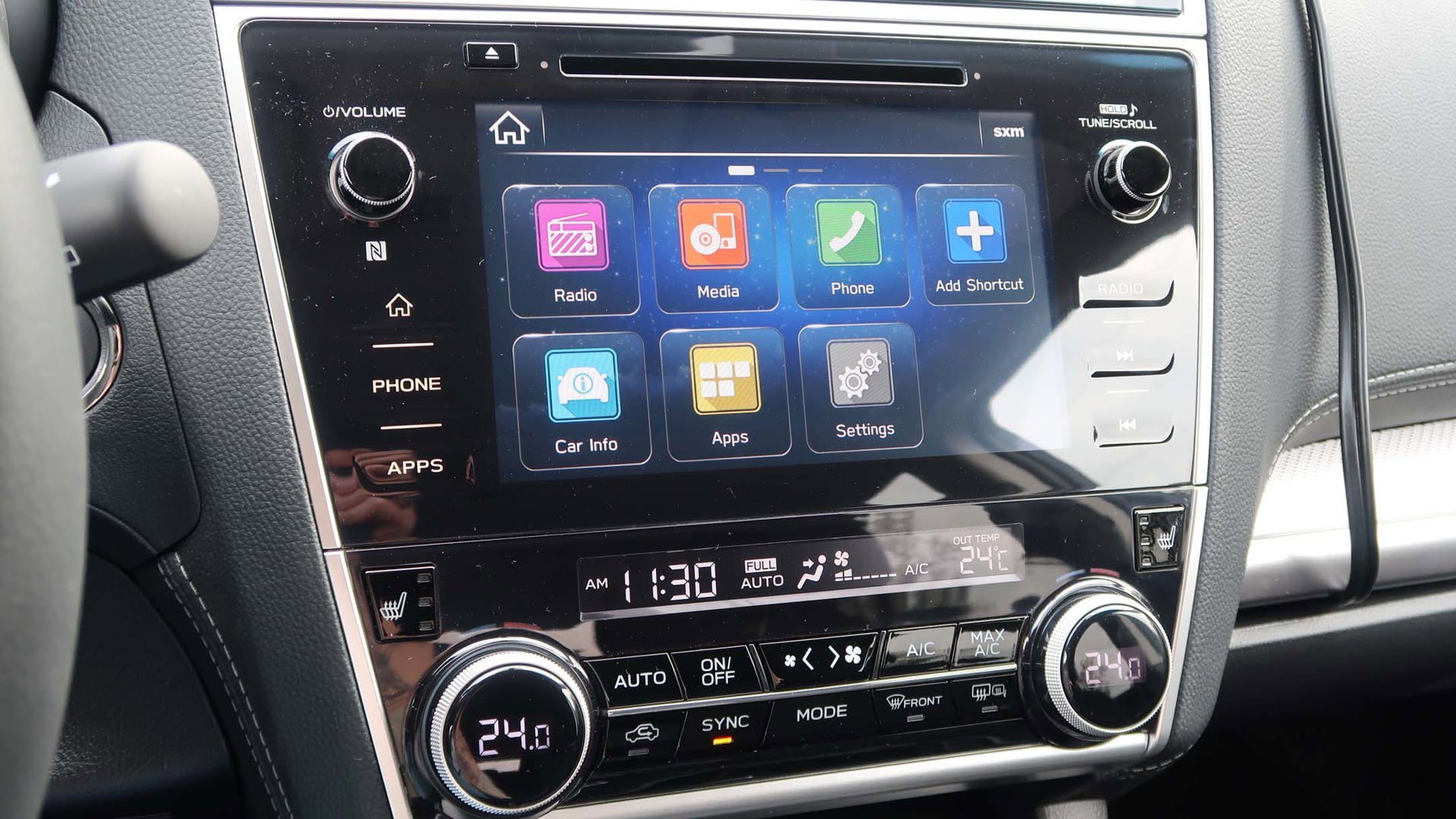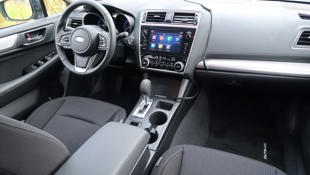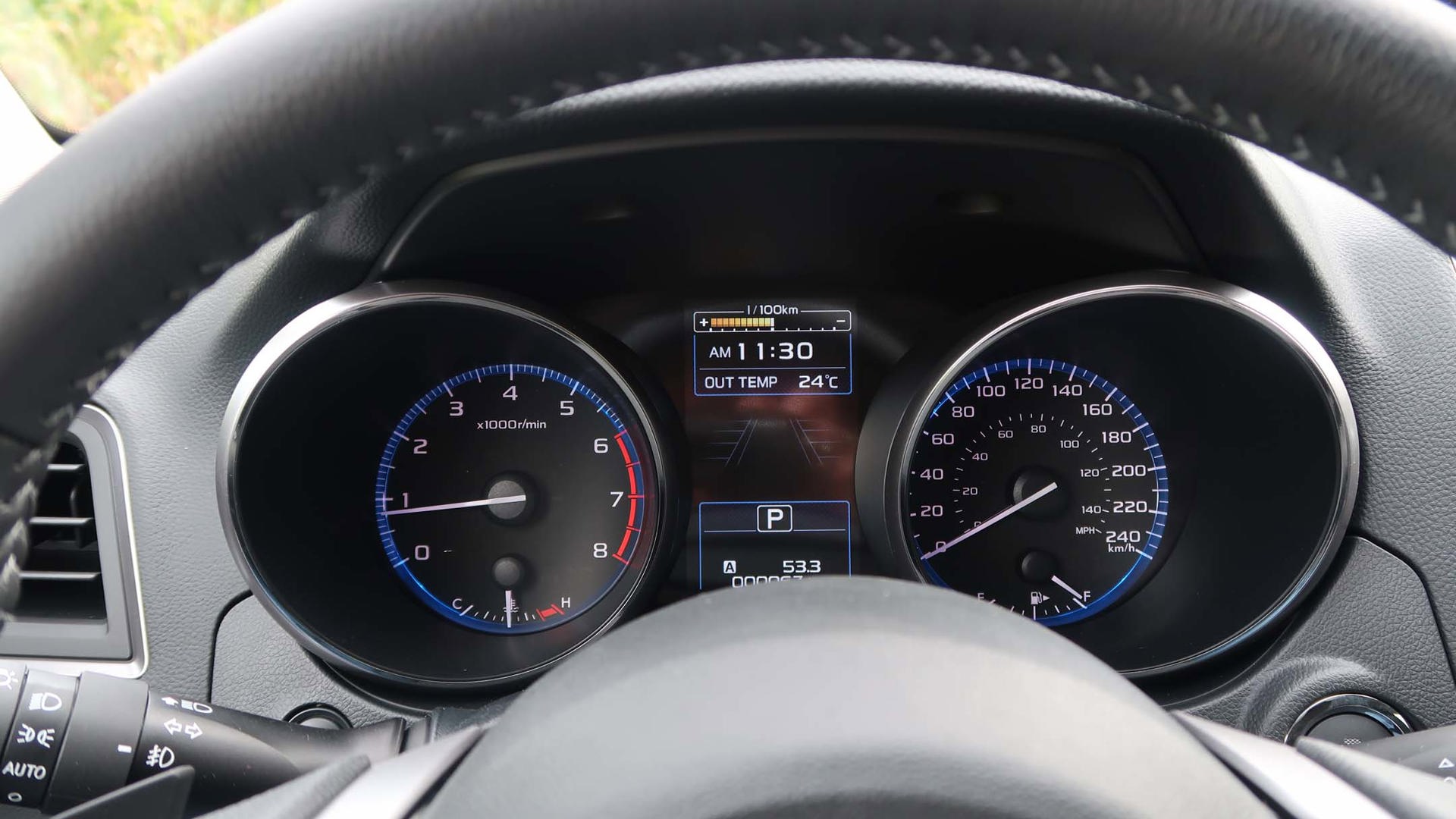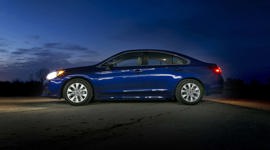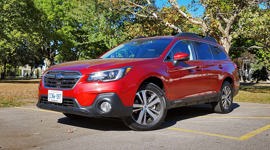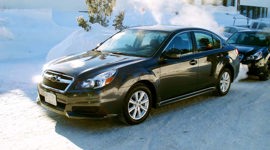BOWMANVILLE, ONT. – If you own a “Save the Manuals” T-shirt, take note: one more is gone. As of 2018, the Subaru Legacy – one of the few mainstream midsize sedans to offer a stick – finally takes out the far left pedal, as does its Outback sibling.
Subaru’s midsize sedan has been on a roller-coaster ride
It isn’t that much of a deal, given that only three percent of buyers actually went for the stick shift (and it really was about price, not the long-throw performance). The bigger news is that these two models receive a refresh for 2018, with styling changes and tweaks to the powertrain.
2018 Subaru Legacy
It’s an important move to update the Legacy, given that car sales overall are on the decline in Canada against rising sport-utes and crossovers. Subaru’s midsize sedan has been on a roller-coaster ride, with sales jumping after each new generation launches, and then tapering off. This refresh builds on the car’s sixth generation, introduced for 2014.
For 2018, there’s a new grille, redesigned mirrors and bumpers, new headlights including available LEDs, and new wheels on the 2.5i Touring. All 2.5L engines are rated PZEV, for Partial Zero-Emissions Vehicle, which reduces the amount of smog-style crap out the tailpipe. EyeSight, a camera-based system of active safety technologies, is now standard instead of optional on the Limited. On the connectivity side, Apple CarPlay and Android Auto are now standard equipment.
The steering wheel has be redesigned, the air conditioning system is more powerful yet quieter, more USB ports have been screwed into the rear console, the infotainment screens are larger, and the Sport and Limited trims have real stitching on the dash. The side windows are now two-pane laminated glass to reduce noise.
The 2.5L four-cylinder and 3.6L six-cylinder are unchanged, both horizontally-opposed and mated to a CVT. The 2.5L undergoes some internal weight and friction loss to reduce vibration; Subaru says it also improves fuel consumption, although the published numbers (9.3 L/100 city, 7.0 highway) haven’t changed. The CVT in the 2.5i model has a shorter pitch to its chain for smoother and quieter operation. Steering and throttle response have been tweaked, and the front and rear dampers are revised for ride comfort.
Between the no-manual and changes to the option packages, the Legacy goes from twelve possible trim combinations to six. The lowest-advertised starting price goes up considerably, but don’t forget that the base 2017 tag was for a stick shift. The entry 2.5i is now $24,995, an increase of $200 over the same model in 2017, and goes up to $33,795. The 3.6R, available in a single top-line trim level, is $36,795.
All Legacy and Outback models come with all-wheel drive, of course, which under normal driving conditions splits the torque 60/40 front to rear. The “symmetrical” name Subaru uses for its AWD refers not to equal power to each wheel, but to the system’s mirror-image configuration on either side of the car’s axis.
I drove the Legacy in both engines, starting with the six-cylinder. It makes 256 horsepower and 247 lb-ft of torque, and while off-the-line acceleration isn’t the sharpest, it picks up speed smoothly when you hit the throttle once it’s moving. The CVT is mostly unnoticeable here, which is always a good thing with these gearless transmissions.
The Legacy is unremarkable, but that’s not a bad thing. It doesn’t try to be a sports sedan, or even a sporty one, but not everyone wants one of those. This Subaru feels heavy, and there’s not much feedback from the steering wheel, but the ride is smooth – better than I recall in the last one I drove – and the steering is accurate if not overly quick. It’s also very quiet inside, and feels substantial and solid. It’s a long-distance cruiser, meant to coddle you, which the Limited does well with its handsome three-tone interior and stitched leather seats. The design is relatively plain, but the materials and execution bring it up a considerable notch.
I then got into the 2.5i, with its four-cylinder engine spinning out 175 horsepower and 174 lb-ft of torque. There’s a lot of car to move here – the 2.5i has a curb weight of 1,596 kg – and acceleration can be tepid. The CVT isn’t as smooth with this engine as it is with the V6, although to its credit, it does the job and doesn’t drone. But the ride is smooth and quiet, including on a pockmarked gravel road, and it’s still going to satisfy drivers who want the all-wheel but don’t want to move up to the six-cylinder’s price.
My 2.5i had cloth seats to the 3.6R’s leather ones, and the difference was more than just the upholstery. The leather chairs were long-distance comfortable, but the cloth one was sculpted in such a way that it pushed uncomfortably into my lower back, below the adjustable lumbar support. Be sure to test-drive the trim level you intend to buy.
2018 Subaru Outback
I next went into the Outback. It was first introduced for 1995, when Subaru’s North American arm asked Japan for a sport-ute to meet the growing craze. Unable to afford the cost of a completely new model, the small automaker beefed up the second generation of its Legacy wagon, and the Outback was born. It’s still based on the Legacy, and Subaru says that while the Crosstrek is aimed at young drivers, and the Forester at young families, the Outback targets a “more mature buyer.”
Well, I guess that’s me, because I like that it offers cargo practicality and a comfortable, upright seating position, and it’s lower and feels more stable than many SUVs. And since Legacy no longer comes in a wagon, it’s the next best thing.
The 2018 changes are similar to that of the Legacy, both of which also get some chassis strengthening and child seat anchors. Both also lose their CD players in the base model trims at least (what’s that about catering to more mature drivers?) and get automatically-locking doors.
Pricing starts at $29,295 for the base 2.5i, which is actually the same price as in 2017 for the CVT model (the 2017’s starting price of $27,995 was with the now-defunct manual). The 2.5i engine tops out with the 2.5i Premier at $39,195. Unlike the Legacy, the Outback’s six-cylinder comes in four trim levels, ranging from $35,795 to $42,195. Sport-ute buyers like their luxury, and Subaru’s going for that slice of the pie.
As noted, the Outback shares the Legacy’s two engines, and while the overall performance is about the same, acceleration takes a bit longer with the Outback’s heavier weight. Perhaps in an effort to overcome the gap between the two, I found the Outback 2.5i’s throttle to be touchier than in the Legacy, with an annoying little snap that made it tough to take off smoothly with a light foot.
All trim levels come with X-Mode, and we went off to the requisite off-road course to check it out. The system, activated by a button on the console, engages hill descent control, keeps the CVT in a lower ratio, and redistributes power when any wheel starts to slip. It got me effortlessly through the three-wheels-only demonstration that’s de rigueur on these events, which wasn’t unexpected, but I liked that it handled a tougher-than-99.8-percent-of-drivers-will-ever-experience course just as well as the taller, more SUV-focused Crosstrek and Forester.
Despite the fact that everyone knows Subaru, it still remains a lower-volume niche player. It topped sales of 50,000 vehicles in Canada last year, the first time it’s ever done that – but Honda sold more than 64,500 copies of its Civic alone. Subaru has made considerable progress in recent years, with vast improvements to its interiors, and a more quiet and comfortable ride, and of course it’s got that AWD going for it in a market that loves power to all four wheels. The Legacy will have the same not-an-SUV issue as every other sedan on the market, but with the tweaks to the rugged Outback, I can see this model making some strides.
